The First Battery Prototype Using Hemoglobin 
by Andrew Corselli February 2024
A team at the University of Cordoba has developed a battery that uses hemoglobin as an electrochemical reaction facilitator, functioning for around 20-30 days.
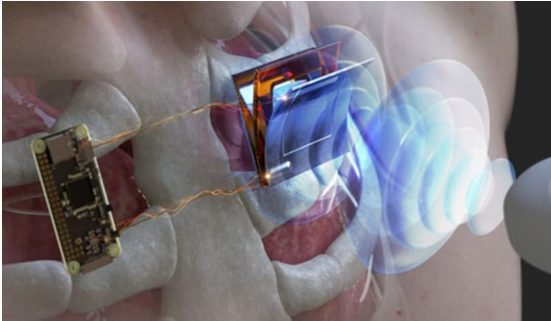 “Our hemoglobin-based zinc-air battery has similar working conditions to the human body. Because of that, we consider that is an appropriate battery for any electronic devices integrated into the human body,” said Lead Author Manuel Cano Luna. (Image: The researchers)
“Our hemoglobin-based zinc-air battery has similar working conditions to the human body. Because of that, we consider that is an appropriate battery for any electronic devices integrated into the human body,” said Lead Author Manuel Cano Luna. (Image: The researchers)
Hemoglobin is a protein present in red blood cells and is responsible for conveying oxygen from the lungs to the different tissues of the body (and then transferring carbon dioxide the other way around). It has a very high affinity for oxygen and is fundamental for life, but, what if it were also a key element for a type of electrochemical device in which oxygen also plays an important role, such as zinc-air batteries?
This is what the Physical Chemistry (FQM-204) and Inorganic Chemistry (FQM-175) groups at the University of Córdoba (UCO) wanted to verify and develop, together with a team from the Polytechnic University of Cartagena, after a study by the University of Oxford and a Final Degree Project at the UCO demonstrated that hemoglobin featured promising properties for the reduction and oxidation (redox) process by which energy is generated in this type of system. Thus, the research team developed, through a Proof-of-Concept project, the first biocompatible battery (which is not harmful to the body) using hemoglobin in the electrochemical reaction that transforms chemical energy into electrical energy.
Using zinc-air batteries, one of the most sustainable alternatives to those that currently dominate the market (Li-ion batteries), hemoglobin would function as a catalyst in such batteries. That is, it is a protein that is responsible for facilitating the electrochemical reaction, called the Oxygen Reduction Reaction (ORR), causing, after the air enters the battery, oxygen to be reduced and transformed into water in one of the parts of the battery (the cathode or positive pole), releasing electrons that pass to the other part of the battery (the anode or negative pole), where zinc oxidation occurs.
"To be a good catalyst in the oxygen reduction reaction, the catalyst has to have two properties: it needs to quickly absorb oxygen molecules, and form water molecules relatively easily,” said Lead Author Manuel Cano Luna. “And hemoglobin met those requirements." In fact, through this process, the team managed to get their prototype biocompatible battery to work with 0.165 milligrams of hemoglobin for between 20 and 30 days.
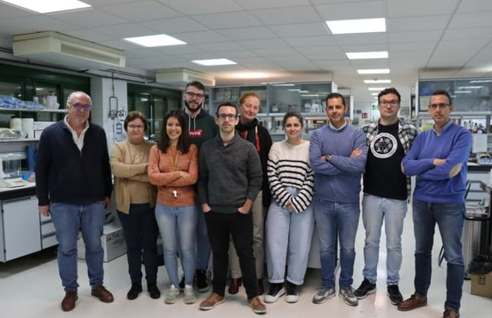
In addition to strong performance, the battery prototype they have developed boasts other advantages. First, zinc-air batteries are more sustainable and can withstand adverse atmospheric conditions, unlike other batteries affected by humidity and requiring an inert atmosphere for their manufacture. Secondly, as Cano Luna noted, "The use of hemoglobin as a biocompatible catalyst is quite promising as regards the use of this type of battery in devices that are integrated into the human body," — e.g., pacemakers. The battery operates at pH 7.4, which is a pH similar to that of blood. In addition, since hemoglobin is present in almost all mammals, proteins of animal origin could also be used.
The research team of the University of Cordoba. (Image: University of Cordoba)
The battery they have developed has some room for improvement, however. The main one is that it is a primary battery, so it only discharges electrical energy. Also, it is not rechargeable. Therefore, the team is already taking the next steps to find another biological protein that can transform water into oxygen and, thus, recharge the battery. In addition, the batteries would only work in the presence of oxygen, so they could not be used in space.
Here is an exclusive Tech Briefs interview — edited for length and clarity — with Cano Luna.
Tech Briefs: What made you choose hemoglobin? How did you decide on that?
Cano Luna: We were inspired by a research paper that reported the electrocatalytic properties of Hemoglobin (Hb) for the Oxygen Reduction Reaction (ORR).
It should be noted that ORR is a key cathodic reaction produced in hydrogen fuel cells and in zinc-air batteries (two important electrochemical devices for energy storage and conversion).
Tech Briefs: What was the biggest technical challenge you faced while developing this battery technology?
Cano Luna: Our major challenge was choosing the best combination of Hb and Nafion, in terms of long-term stability. Hb protein is very soluble in water. Therefore, to keep this protein on the surface of the air electrode, it was necessary to use Nafion.
Basically, Nafion ionomer is a polymer, that acts like a membrane, thus avoiding the loss of Hb from the electrode surface.
Tech Briefs: Can you explain in simple terms how it works?
Cano Luna: Hb acts as an electrocatalyst in the cathodic reaction, adsorbing O2 from the air and reducing this O2 to H2O (ORR) with a four-electron pathway (i.e. performing both actions efficiently).
ORR on a bare working electrode typically leads to the formation of hydrogen peroxide, which involves a two-electron transfer: O2 + 2H+ + 2e- ® H2O2.
While a Hb-modified working electrode allows a four-electron conversion to water (i.e. the desirable one): O2 + 4H+ + 4e- ® H2O.
Tech Briefs: What are the pros and cons of using hemoglobin batteries?
Cano Luna: Main advantage: The use of a biological protein as an ORR catalyst and an aqueous electrolyte solution at a neutral pH of 7.4 (i.e. physiological conditions) makes zinc-air batteries much more biocompatible, less dangerous, and more environmentally friendly.
Related Articles
Fundamental EV Battery Models Explain New Tab Design
Internal Short Circuit (ISC) Device Helps Improve Li-ion Battery Design
Main disadvantage: The use of a biological molecule as an electrocatalyst limits the working conditions of this energy storage device, causing it to be not useful in extreme conditions (e.g. high temperature causes protein denaturation).
Tech Briefs: The article says, “The team is already taking the next steps to find another biological protein that can transform water into oxygen and, thus, recharge the battery.” How is that coming along? Any updates you can share?
Cano Luna: Currently, we are testing several proteins as possible electrocatalysts for Oxygen Evolution Reaction (OER). Once we choose the best candidate, the next step will be to identify a perfect combination with Hb, aiming for a “synergistic effect” between both proteins. OER is the reaction for charging the zinc-air battery: 2H2O ® O2 + 4H+ + 4e-.
Tech Briefs: What are your next steps? Any other future research/work/etc. on the horizon?
Cano Luna: Our current efforts are focused on making this battery rechargeable, using only biological molecules as electrocatalysts. We consider that as a new research line in the field of zinc-air battery
- Details
- Category: Inside TRIZ
Breakthrough: Artificial DNA opens the door to designer proteins
Researchers used a synthetic DNA system called AEGIS to design two artificial nucleotides that flawlessly mimic the geometry of natural nucleotides.
by Rizwan Choudhury Published: Dec 17, 2023 08:02 AM EST

Concept image of genetic codes in DNA. ktsimage/iStock
DNA, the molecule that stores the genetic information of all living things, is made up of just four chemical letters, or nucleotides. But what if we could add more letters to this alphabet and create new kinds of DNA?
That's what a team of researchers from the University of California San Diego, the Foundation for Applied Molecular Evolution, and the Salk Institute for Biological Studies have done. They have developed a new version of DNA with six letters instead of four, showing that it can be used to make proteins, the building blocks of life.
This feat, published in Nature Communications, opens doors to a future where custom-designed proteins and novel biological applications could become a reality.
Four nucleotides
DNA, the blueprint of life, encodes its instructions using just four nucleotides – adenine (A), thymine (T), guanine (G), and cytosine (C). These nucleotides pair in specific configurations, forming the iconic double helix. But what if this alphabet could be expanded? The implications are compelling, ranging from personalized medicine to revolutionary materials.
"Life on Earth is amazingly diverse with just four nucleotides, so imagine what we could do with more," said Dong Wang, Ph.D., a professor at Skaggs School of Pharmacy and Pharmaceutical Sciences at UC San Diego and the senior author of the study.
"By expanding the genetic code, we could create new molecules that have never been seen before and explore new ways of making proteins as therapeutics."
Wang and his colleagues used a synthetic DNA system called AEGIS, which stands for Artificially Expanded Genetic Information System. AEGIS was created by Steven A. Benner, PhD, at the Foundation for Applied Molecular Evolution, as part of a NASA-funded project investigating how life could have evolved in other planets.
Dr. Dong Wang aptly describes that adding new 'letters' to the genetic code expands the vocabulary of life, allowing us to write more complex narratives." His team's breakthrough demonstrates that cells can readily incorporate synthetic nucleotides into the DNA recipe.
Using AEGIS
AEGIS adds two new letters to the standard DNA alphabet, which consists of adenine (A), thymine (T), guanine (G), and cytosine. These letters pair up in a specific way to form the double-helix structure of DNA, which was discovered by James Watson and Francis Crick in 1953.
The new letters, Z and P, have the same shape and size as the natural ones, so they can fit into the DNA helix without disrupting its geometry. This means that the enzymes that read and copy DNA, such as RNA polymerase, can recognize and process AEGIS DNA just like natural DNA.
RNA polymerase
The key lies in mimicking nature's machinery. The researchers identified RNA polymerase, a key enzyme that converts DNA into RNA, which is then used to make proteins. They designed two artificial nucleotides that flawlessly mimic the geometry of natural nucleotides. RNA polymerase readily accepted these novel additions when tested, seamlessly incorporating them into transcription.
The researchers tested whether RNA polymerase from bacteria could transcribe AEGIS DNA into RNA and found that it could do so with high accuracy and efficiency.
"This is a remarkable demonstration of how robust and adaptable the biological machinery is," said Wang. "By mimicking the natural shape of DNA, our synthetic letters can sneak in and be used to make new proteins."
This breakthrough paves the way for exciting possibilities. Imagine designing proteins with tailor-made properties capable of precisely targeting tumors for cancer therapy or engineering bacteria to synthesize eco-friendly biofuels. The vast horizons extend beyond medicine and environmental applications to materials science and potentially even synthetic biology.
Of course, challenges remain. Optimizing the incorporation of new nucleotides, ensuring their stability within the genome, and deciphering the full potential of this expanded code are areas for further exploration. Yet, the foundation for rewriting the genetic lexicon has been laid.
This discovery signifies a momentous leap in our understanding of life's blueprint. It holds the promise of ushering in a new era of biological design, where the possibilities are limited only by our imagination.
"These new proteins could have applications in medicine, biotechnology, and bioengineering," said Wang. "We are only scratching the surface of what we can do with artificial DNA."
Study abstract:
Artificially Expanded Genetic Information Systems (AEGIS) add independently replicable unnatural nucleotide pairs to the natural G:C and A: T/U pairs found in native DNA, joining the unnatural pairs through alternative modes of hydrogen bonding. Whether and how AEGIS pairs are recognized and processed by multi-subunit cellular RNA polymerases (RNAPs) remains unknown. Here, we show that E. coli RNAP selectively recognizes unnatural nucleobases in a six-letter expanded genetic system. High-resolution cryo-EM structures of three RNAP elongation complexes containing template-substrate UBPs reveal the shared principles behind the recognition of AEGIS and natural base pairs. In these structures, RNAPs are captured in an active state, poised to perform the chemistry step. At this point, the unnatural base pair adopts a Watson-Crick geometry, and the trigger loop is folded into an active conformation, indicating that the mechanistic principles underlying recognition and incorporation of natural base pairs also apply to AEGIS unnatural base pairs. These data validate the design philosophy of AEGIS unnatural base pairs. Further, we provide structural evidence supporting a long-standing hypothesis that pair mismatch during transcription occurs via tautomerization. Together, our work highlights the importance of Watson-Crick complementarity underlying the design principles of AEGIS base pair recognition.
- Details
- Category: Inside TRIZ
AI to speed up clinical trials

By Natalie Grover and Martin Coulter
September 22, 2023, 7:00 AM EDT Updated 3 days ago
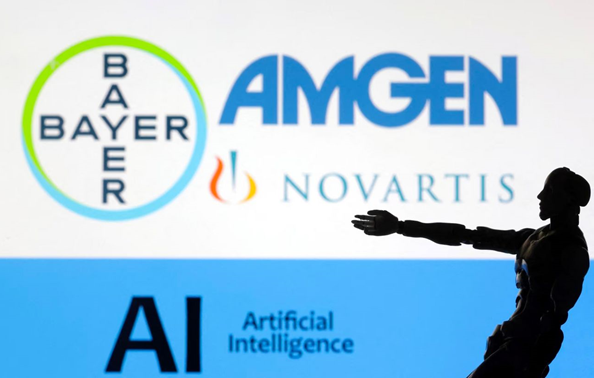
A robot miniature and the words 'Pharmaceutical Research - AI Artificial Intelligence' are seen in this illustration taken, on July 17, 2023.
LONDON, Sept 22 (Reuters) - Major drugmakers are using artificial intelligence to find patients for clinical trials quickly, or to reduce the number of people needed to test medicines, both accelerating drug development and potentially saving millions of dollars.
Human studies are the most expensive and time-consuming part of drug development as it can take years to recruit patients and trial new medicines in a process that can cost over a billion dollars from the discovery of a drug to the finishing line.
Pharmaceutical companies have been experimenting with AI for years, hoping machines can discover the next blockbuster drug. A few compounds picked by AI are now in development, but those bets will take years to play out.
Reuters interviews with more than a dozen pharmaceutical company executives, drug regulators, public health experts, and AI firms show, however, that the technology is playing a sizeable and growing role in human drug trials.
Companies such as Amgen (AMGN.O), Bayer (BAYGn.DE), and Novartis (NOVN.S) are training AI to scan billions of public health records, prescription data, medical insurance claims, and their internal data to find trial patients - in some cases halving the time it takes to sign them up.
"I don't think it's pervasive yet," said Jeffrey Morgan, managing director at Deloitte, which advises the life sciences industry. "But I think we're past the experimentation stage."
The U.S. Food and Drug Administration (FDA) said it had received about 300 applications that incorporate AI or machine learning in drug development from 2016 through 2022. Over 90% of those applications came in the past two years and most were for the use of AI at some point in the clinical development stage.
ATOMIC AI
Before AI, Amgen would spend months sending surveys to doctors from Johannesburg to Texas to ask whether a clinic or hospital had patients with relevant clinical and demographic characteristics to participate in a trial.
Existing relationships with facilities or doctors would often sway the decision on selecting trial sites.
However, Deloitte estimates about 80% of studies miss their recruitment targets because clinics and hospitals overestimate the number of available patients, there are high dropout rates or patients don't adhere to trial protocols.
Amgen's AI tool, ATOMIC, scans troves of internal and public data to identify and rank clinics and doctors based on past performance in recruiting patients for trials.
Enrolling patients for a mid-stage trial could take up to 18 months, depending on the disease, but ATOMIC can cut that in half in the best-case scenario, Amgen told Reuters.
Amgen has used ATOMIC in a handful of trials testing drugs for conditions including cardiovascular disease and cancer, and it aims to use it for most studies by 2024.
The company said by 2030, it expects AI will have helped it shave two years off the decade or more it typically takes to develop a drug.
The AI tool Novartis uses has also made enrolling patients in trials faster, cheaper, and more efficient, said Badhri Srinivasan, its head of global development operations. But he said AI in this context is only as good as the data it gets.
In general, less than 25% of health data is publicly available for research, according to Sameer Pujari, an AI expert at the World Health Organization.
EXTERNAL CONTROL ARMS
German drugmaker Bayer said it used AI to cut the number of participants needed by several thousand for a late-stage trial for Asundexian, an experimental drug designed to reduce the long-term risk of strokes in adults.
It used AI to link the mid-stage trial results to real-world data from millions of patients in Finland and the United States to predict the long-term risks in a population like the trial.
Armed with the data, Bayer started the late-stage trial with fewer participants. Without AI, Bayer said it would have spent millions more, and taken up to nine months longer to recruit volunteers.
Now the company wants to take it a step further.
For a study to test asundexian in children with the same condition, Bayer said it plans to use real-world patient data to generate a so-called external control arm, potentially eliminating the need for patients to take a placebo.
That's because the condition is so rare in the age group that it would be difficult to recruit patients and could raise concerns about whether it was ethical to give trial participants a placebo when there are no proven treatments available.
Instead, Bayer aims to mine anonymized real-world data of children with similar vulnerabilities.
Bayer said it hoped that would be enough to help discern how effective the drug is. Finding real-world patients by mining electronic patient data can be done manually, but using AI speeds up the process dramatically.
While unusual, external control arms have been used in the past instead of traditional randomized control arms where half the participants take a placebo - mainly for rare diseases where there are few patients or no existing treatments.
Amgen's drug Blincyto, designed to treat a rare form of leukemia, received U.S. approval after adopting this approach, although the company had to conduct a follow-up study to confirm the drug's benefit once it was on sale.
Blythe Adamson, senior principal scientist at Roche (ROG.S) subsidiary Flatiron Health, said the advantage of AI was that it let scientists examine real-world patient data quickly, and at scale.
She said it could take months to trawl through data from 5,000 patients using traditional methods: "Now we can learn those same things for millions of patients in days."
OVERESTIMATION RISK
Drugmakers typically seek prior approval from regulators to test a drug using an external control arm.
Bayer said it was in discussions with regulators, such as the FDA, about now relying on AI to create an external arm for its pediatric trial. The company did not offer additional details.
The European Medicines Agency (EMA) said it had not received any applications from companies seeking to use AI in this way.
Some scientists, including the FDA's oncology chief, are worried drug companies will try to use AI to come up with external arms for a broader range of diseases.
"When you're comparing one arm without randomization to another arm, you are assuming that you have the same populations in both. That doesn't account for the unknown," said Richard Pazdur, director of the FDA's Oncology Center of Excellence.
Patients in trials tend to feel better than people in the real world because they believe they are getting an effective treatment and also get more medical attention, which could in turn overestimate the success of a drug.
This risk is one of the reasons regulators tend to insist on randomized trials as all patients believe they are getting the drug, even though half are on a placebo.
Gen Li, founder of clinical data analytics firm Phesi, said many companies were exploring AI's potential to reduce the need for control groups.
Regulators, however, say that although AI has the potential to augment the clinical trial process, evidentiary standards for a drug's safety and effectiveness will not change.
"The main risks with AI are that we want to make sure we don't get the wrong answer to the question of whether a drug works," said John Concato, associate director for real-world evidence analytics in the Office of Medical Policy in the FDA's Center for Drug Evaluation and Research.
Reporting by Natalie Grover and Martin Coulter in London; Additional reporting by Julie Steenhuysen in Chicago; Editing by Josephine Mason and David Clarke
- Details
- Category: Inside TRIZ
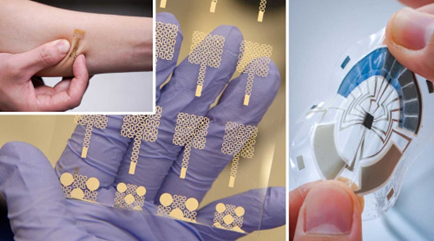

By Bill Schweber June 1, 2023
Researchers are investigating an array of different skin-wearable patches for medical monitoring and healing.
What You’ll Learn
- Why patch-based wearable devices for medical monitoring are gaining more research attention.
- How these devices are fabricated to achieve specific objectives.
- How some wearable devices implement monitoring and others add control.
Medical-related electronics research is receiving lots of attention (and funding) due to the confluence of various technical, medical, population, and other factors. How much influence each of these has could be discussed at length without a firm conclusion. But one thing is clear: Much of the work being done, especially in university-related settings, is centered on wearable skin patches that provide different types of functionality.
Why patches? The question should really be “Why not?” They provide a direct way to accomplish various objectives, are relatively easy to monitor, don’t require invasive surgery, and are “student-research” friendly. They are certainly much more easily evaluated and tested than implanted devices, which also accelerates the entire development and evaluation cycle.
The four recent patch-related projects cited here are just a few of the ones that have been recently published. Note that each has a different focus, showing the breadth of patch-related research now underway.
Example #1: Screen-Printed Electrodes
A multi-institutional research effort led by Washington State University has demonstrated electrodes that can be created using just screen printing. The resultant stretchable, durable circuit patterns can be transferred to fabric and worn directly on human skin. In contrast, current commercial manufacturing of wearable electronics requires fairly expensive processes involving clean rooms.
While some other implementations presently use screen printing for parts of the process, this new method relies strictly on screen printing.
They used a multi-step process of layering polymers and metal inks to create snake-like structures of the electrode. The screen printing of the polyimide (PI) layer enables facile, low-cost, scalable, high-throughput manufacturing.
PI mixed with poly(ethylene glycol) exhibited a shear-thinning behavior, significantly improving the printability of PI. The premixed Ag/AgCl ink is then used for conductive layer printing. Multiple electrodes are printed onto a pre-treated glass slide, which allows them to be easily peeled off and transferred onto fabric or other material (Fig. 1).
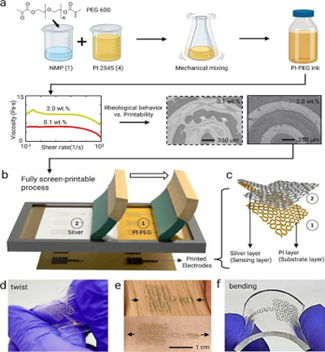
1. For the stretchable, conformable patches, the multistep process involves layering polyimide (PI) and conductive Ag/AgCl inks to create structures of the electrode.
While the resulting thin pattern appears delicate, the electrodes aren’t fragile. The serpentine pattern of the screen-printed electrode accommodates natural deformation under stretching (30%) and bending conditions (180 degrees), which are verified by computational and experimental studies (Fig. 2).
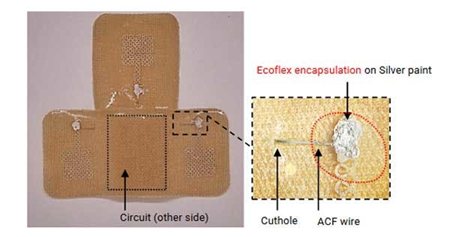
2. This bottom view of the device doesn’t show most of the inner workings (ACF is anisotropic conductive film).
After printing the electrodes, the researchers transferred them onto an adhesive fabric that was then worn directly on the skin by volunteers. The wireless electrodes with an on-board associated circuit, including a 2.4-GHz Bluetooth link, accurately recorded heart and respiratory rates, sending the data to a mobile phone (Fig. 3)ate University
3. An exploded view of the device provides more perspective on the completed arrangement.
In addition to Washington State University, the team included the Georgia Institute of Technology and Pukyong National University in South Korea. The work is detailed in the American Chemical Society (ACS) paper “Fully Screen-Printed PI/PEG Blends Enabled Patternable Electrodes for Scalable Manufacturing of Skin-Conformal, Stretchable, Wearable Electronics,” with more details in the Supporting Information file.
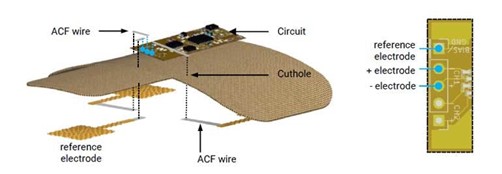
Example #2: Electronic Bandage Speeds Healing
Northwestern University researchers developed a small, flexible, stretchable bandage—claimed to be a first-of-its-kind—that accelerates healing by delivering electrotherapy directly to the wound site. In an animal study, the new bandage healed diabetic ulcers 30% faster than in mice without the bandage. The bandage also actively monitors the healing process and then harmlessly dissolves—electrodes and all—into the body after it is no longer needed.
Injuries can disrupt the body’s normal electrical signals. The researchers wanted to see if electrical stimulation therapy could help close small, stubborn wounds where high glucose levels due to diabetes also thicken capillary walls, slowing blood circulation and making it more difficult for these wounds to heal. By applying electrical stimulation, it restores the body’s normal signals, attracting new cells to migrate to the wound bed.
“Although it’s an electronic device, the active components that interface with the wound bed are entirely resorbable,” said Northwestern’s John A. Rogers, who co-led the study. “As such, the materials disappear naturally after the healing process is complete, thereby avoiding any damage to the tissue that could otherwise be caused by physical extraction.”
file:///C:/Users/Owner/AppData/Local/Temp/msohtmlclip1/11/clip_image009.jpg" alt=" Ed Skin Patches Interest Fig4 645bc04de9613" width="500" height="414" />The joint team developed a small, flexible bandage that softly wraps around the injury site. One side of the smart regenerative system contains two electrodes: A tiny flower-shaped electrode that sits right on top of the wound bed and a ring-shaped electrode that sits on healthy tissue to surround the entire wound. The other side of the device contains an energy-harvesting coil to power the system and a near-field communication (NFC) system for real-time updates (Fig. 4)
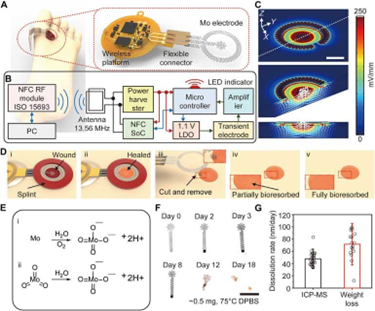
Fig.4. Materials and designs of a bioresorbable, wireless, and battery-free electrotherapy system: (a) Schematic illustrations of a transient, wireless, battery-free system for electrotherapy mounted on a wound on the foot (left) and in an enlarged view (right) that highlights the different components. (b) Operational diagram of the entire system (RF, radio frequency; ISO, interconnection system operation; LDO, low-dropout regulator). (c) FEA results from the electric field between the positive (+) and negative (−) electrodes. Scale bar, 3 mm. (d) Schematic illustrations of the mode of use, device on a wound before (i) and after healing (ii), removed by cutting the traces to the anode (iii), partially bioresorbed after a period of therapy (iv), and fully bioresorbed (v). The semitransparent orange color represents the healed skin.
The team also included sensors that can assess how well the wound is healing. The device can be operated remotely without wires. This enables the physician to decide when to apply the electrical stimulation and monitor the wound’s healing progress.
By measuring the resistance of the electrical current across the wound, physicians are able to monitor progress. A gradual decrease in current measurement relates directly to the healing process. So, if the current remains high, then physicians know something is wrong.
In a study of animal models, the researchers applied electrical stimulation for just 30 min. a day. Even this short amount of time accelerated the closure by 30%. When the wound is healed, the flower-shaped, ultra-thin molybdenum electrode simply dissolves into the body, bypassing the need to retrieve it. Furthermore, it doesn’t interfere with the healing process.
The work is explored in their paper in Science Advances, “Bioresorbable, wireless, and battery-free system for electrotherapy and impedance sensing at wound sites,” which also includes the appended Supplemental Information. Check out this two-minute video:
Example #3: Sweat Sensor with Immediate Readout
Sweat is a “gold mine” of useful information about the body. Recognizing its virtues, engineers at the University of California San Diego developed a thin, flexible, and stretchy sweat sensor that can show the level of glucose, lactate, sodium, or pH of sweat, and do so at the press of a finger.
They claim it’s the first standalone wearable device that allows the sensor to operate independently—without any wired or wireless connection to external devices—to directly visualize the result of the measurement. The design of this small disk-shaped patch includes all of the essential components that are required for wearable sensors: two integrated batteries, a microcontroller, sensors, the circuit, and a stretchable display.
Fabrication of the device involves the formulation of nine types of different stretchable inks, which were used to print the batteries, circuits, display panels, and sensors. The device is printed layer-by-layer onto stretchable polymer sheets and then assembled with hydrogels and microcontroller chips into the complete device. Each ink was optimized to ensure its compatibility with other layers while balancing its electrical, chemical, and mechanical performance (Fig. 5). University of California San Diego
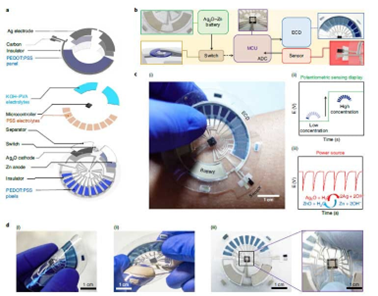 5. System overview of the all-printed skin-interfaced ECD sensing patch: (a) Exploded view detailing the individual layers of the epidermal patch. (b) System flowchart of the system and the zoomed-in view of the individual modules. (c) Operation of the patch. A photographic image demonstrates the patch used for epidermal sweat sensing by instantaneously revealing the target concentration (i). Illustration of the change in display that changes with the electrolyte concentration and readout of the potentiometric sensor (ii) and the intermittent discharge mode of the Ag2O–Zn battery that supplies power to the system (iii). (d) Photographic images demonstrating the mechanical performance and durability of the patch, including its bending (i) or stretching (ii) and stretching of the connection between the interconnect and MCU (iii).
5. System overview of the all-printed skin-interfaced ECD sensing patch: (a) Exploded view detailing the individual layers of the epidermal patch. (b) System flowchart of the system and the zoomed-in view of the individual modules. (c) Operation of the patch. A photographic image demonstrates the patch used for epidermal sweat sensing by instantaneously revealing the target concentration (i). Illustration of the change in display that changes with the electrolyte concentration and readout of the potentiometric sensor (ii) and the intermittent discharge mode of the Ag2O–Zn battery that supplies power to the system (iii). (d) Photographic images demonstrating the mechanical performance and durability of the patch, including its bending (i) or stretching (ii) and stretching of the connection between the interconnect and MCU (iii).
Typical electrochromic displays require transparent glass panels with a conductive but brittle coating, which would not work for this device. Instead, the researchers turned to a special polymer called PEDOT:PSS, which is both conductive and has electrochromic properties.
The polymer changes from light sky blue to dark navy blue when applying a negative voltage; it turns back when applying a positive voltage. By tuning the ink formulation with PEDOT:PSS, it can be made both printable and stretchable—the patch can be stretched 20% repeatedly without affecting its performance (Fig. 6). University of California San Diego
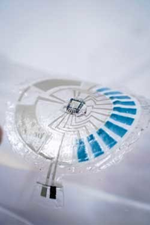
6. The patch can be stretched 20% repeatedly without affecting its performance.
The researchers designed a display panel composed of 10 individual pixels, which is programmed to display the concentration of the chemicals by turning on different pixels. After optimizing the operation condition of the display, each pixel can be turned on and off reversibly over 10,000 cycles, more than sufficient for its week-long operation.
The pixels only take 500 ms to change color, during which time they consume just 80 µW of power on average. As it requires no power to maintain the displayed result, the display is very energy-efficient for its application.
Full details can be found in the Nature Electronics paper “A stretchable epidermal sweat sensing platform with an integrated printed battery and electrochromic display,” which also has appended Supplemental Information.
Example #4: Smart Bandage Promotes, Monitors Healing
A smart bandage developed at the California Institute of Technology (Caltech) may make treatment of wounds that will not go away—and ultimately become infected and fester—easier, more effective, and less expensive.
Unlike a typical bandage, which might only consist of layers of absorbent material, smart bandages are made from a flexible and stretchy polymer containing embedded electronics and medication. The electronics enable the sensor to monitor for molecules like uric acid (UA) or lactate and conditions like pH level or temperature in the wound that may be indicative of inflammation or bacterial infection (Fig. 7). Caltech
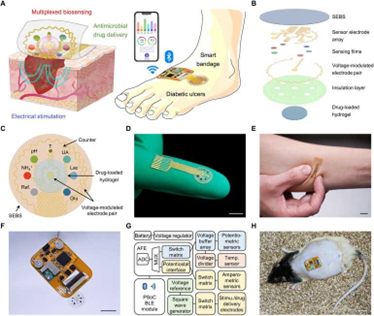
7. A wireless stretchable wearable bioelectronic system for multiplexed monitoring and treatment of chronic wounds: (A) Schematic of a soft wearable patch on an infected chronic nonhealing wound on a diabetic foot. (B) Schematic of layer assembly of the wearable patch, showing the soft and stretchable SEBS poly[styrene-b-(ethylene-co-butylene)-b-styrene] substrate, the custom-engineered electrochemical biosensor array, a pair of voltage-modulated electrodes for controlled drug release and electrical stimulation, and an anti-inflammatory and antimicrobial drug-loaded electroactive hydrogel layer. (C) Schematic layout of the smart patch consisting of a temperature (T) sensor, pH, ammonium (NH4+), glucose (Glu), lactate (Lac), and UA sensing electrodes; reference (Ref) and counter electrodes; and a pair of voltage-modulated electrodes for controlled drug release and electrical stimulation. (D, E) Photographs of the fingertip-sized stretchable and flexible wearable patch. Scale bars, 1 cm. (F, G) Schematic diagram (F) and photograph (G) of the fully integrated miniaturized wireless wearable patch. Scale bar, 1 cm. (ADC, analog-to-digital converter; AFE, analog front end; PSoC, programmable system-o- chip; MUX, multiplexer; BLE, Bluetooth Low Energy) (H) Photograph of a fully integrated wearable patch on a diabetic rat with an open wound. Scale bar, 2 cm.
The bandage can respond in one of three ways. First, it can transmit the gathered data from the wound wirelessly to a nearby computer, tablet, or smartphone for review by the patient or a medical professional. Second, it can deliver an antibiotic or other medication stored within the bandage directly to the wound site to treat the inflammation and infection. Third, it can apply a low-level electrical field to the wound to stimulate tissue growth, resulting in faster healing.
The wearable patch is mechanically flexible and stretchable. It can also conformally adhere to the skin wound throughout the entire wound-healing process, preventing any undesired discomfort or skin irritation. The patch monitors a panel of wound biomarkers, including temperature, pH, ammonium, glucose, lactate, and UA. They were chosen on the basis of their importance in reflecting the infection, metabolic and inflammatory status of chronic wounds.
The disposable wearable patch consists of a multimodal biosensor array for simultaneous and multiplexed electrochemical sensing of wound exudate biomarkers, a stimulus-responsive electroactive hydrogel loaded with a dual-function anti-inflammatory and antimicrobial peptide (AMP), and a pair of voltage-modulated electrodes for controlled drug release and electrical stimulation.
The multiplexed sensor array patch is fabricated via standard microfabrication protocols on a sacrificial layer of copper followed by transfer printing onto a SEBS (styrene-ethylene-butylene-styrene) thermoplastic elastomer substrate. The serpentine-like design of electronic interconnects, and the highly elastic nature of SEBS enable high stretchability and resilience of the sensor patch against undesirable physical deformations.
A four-layer flexible printed circuit board (FPCB) measuring 36.5 × 25.5 mm was used, with the sensor patch directly underneath the FPCB accessed through a rectangular cutout (12 × 3.8 mm). The power-management circuitry consists of a magnetic reed switch and a voltage. The electrical stimulation and drug-delivery circuitry used a voltage reference, an op-amp square-wave generator circuit, and a switch array. The potentiometric, amperometric, and temperature sensor interface circuitry consists of a voltage buffer array, switch array, voltage divider, and electrochemical analog front end.
A programmable system-on-chip (SoC) Bluetooth Low Energy (BLE) module was used for data processing and wireless communication. The fully integrated wearable device was attached to the mice or rats using 3M double-sided tape and fixed with liquid adhesive to enable strong adhesion, allowing the animals to move freely over a prolonged period.
The work is discussed in their paper “A stretchable wireless wearable bioelectronic system for multiplexed monitoring and combination treatment of infected chronic wounds” published in Nature Communications. The paper is hard to follow due to its stilted, formal tone and heavy skews toward biochemistry and medical implication rather than the fabrication and electronics. There’s also a 28-page Supplementary Materials file that provides some more details on the device construction and includes a schematic diagram and bill of materials.
This article appeared in Electronic Design, an affiliate publication of Machine Design.
- Details
- Category: Inside TRIZ
In War Against Industrial Corrosion,
Clean Lasers 
Prove Very Effective
Clean technology lasers offer industrial corrosion removal in myriad applications.
Del Williams Aug 10, 2023
"
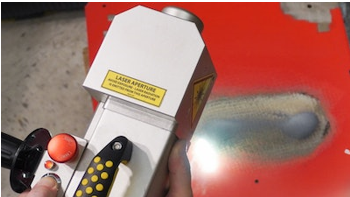 The technology minimizes operator exposure to potential environmental health hazards and no consumables are necessary." Laser Photonics
The technology minimizes operator exposure to potential environmental health hazards and no consumables are necessary." Laser Photonics
Industries have been fighting a war against corrosion in metal infrastructure, equipment, and products at great expense for generations.
The global cost of corrosion is estimated to be $2.5 trillion, which is equivalent to 3.4% of the global Gross Domestic Product (GDP) (2013), according to a NACE International IMPACT study to examine the current role of corrosion management in industry and government and to establish best practices.
Given the massive industrial outlay, proactively controlling corrosion is imperative and can have an equally impressive ROI.
“By using available corrosion control practices, it is estimated that savings of between 15 and 35% of the cost of corrosion could be realized, i.e., between US$375 and $875 billion annually on a global basis…The fact that corrosion control provides a cost-benefit is a lesson learned over and over again by industry, often too late and following catastrophic events,” continued the NACE International IMPACT study.
However, traditional methods of removing corrosion can be messy, laborious, time-consuming, and can even pose serious health hazards.
Today, one of the easiest to use and most effective alternatives in the war against corrosion is the increasingly important category of industrial-grade, clean technology lasers.
With this approach, precision laser-based systems are used to remove corrosion, contaminants, paint, and residues with a high-energy laser beam that leaves the substrate unaffected. Preparation and cleanup time are minimal, and the low-maintenance equipment can last decades. The technology minimizes operator exposure to potential environmental health hazards. In addition, no consumables are necessary.
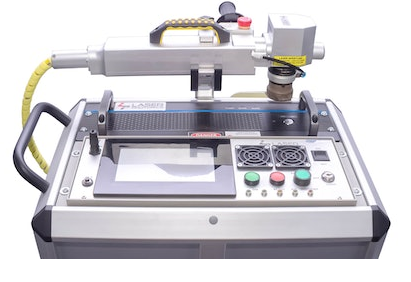
"CleanTech laser systems can last for 50,000 to 100,000 hours with virtually no maintenance needed after purchase and no consumables required." Laser Photonics
Corrosion and the Limits of Conventional Control
Any industry with metal infrastructure, processing equipment, or products exposed to water, fluids, moisture, or atmospheric humidity continually fights corrosion, which causes the deterioration and loss of a material and its critical properties due to chemical, and electrochemical reactions of the exposed surface with the surrounding environment. Corrosion affects the microstructure, mechanical properties, and physical appearance of the materials.
The direct cost of corrosion includes a loss of materials, equipment, and production, plus the cost of repair, maintenance, and replacement. Additional losses can result from accidents, injuries, and even loss of life as well as payments to repair environmental damage.
Within the continual struggle against industrial corrosion, one important niche area of corrosion control involves the pretreating of metal surfaces to remove corrosion and contaminants before coating or welding.
Although metal surface pretreatment is a small portion of industrial corrosion control, it is crucial to ensure the safety, performance, and longevity of products and structures.
Insufficient coating pretreatment can lead to inadequate protection from the environment, leading to potential coating failure, moisture entry, and accelerated corrosion as well as increased maintenance, early replacement, and warranty issues. Similarly, insufficient weld pretreatment to remove corrosion and contaminants can lead to weakened or failed welds and necessary rework as well as substantial safety, liability, and litigation risk.
Clean technology lasers offer superior industrial corrosion removal in myriad applications, helping solve some of the industry’s most costly corrosion problems.
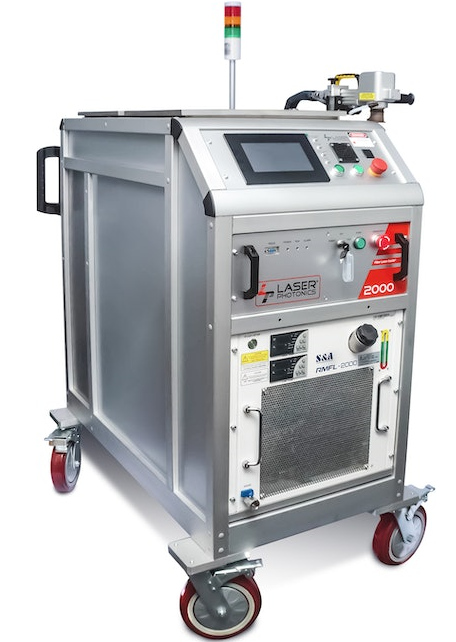
Clean technology lasers offer superior industrial corrosion removal in myriad applications, helping solve some of the industry’s most costly corrosion problems. Laser Photonics
A More Effective Weapon to Eliminate Corrosion
In many industries, it is necessary to remove corrosion, residue, oil, grease, or paint before coating a product or infrastructure to improve coating adhesion.
Toward this end, laser-based systems have significant advantages over traditional methods, starting with ease of use.
“With laser-based systems, an operator simply points and clicks a high-energy laser beam at the surface. The substrate is not affected by the laser and the systems do not create any mess or byproducts. The approach is eco-friendly and energy-efficient. It completes the job in approximately half the time of traditional methods when preparation and cleanup are considered. Also, no consumables are required,” said Wayne Tupuola, CEO, of Orlando, Florida-based Laser Photonics, a leading provider of patented industrial-grade CleanTech lasers for cleaning and surface conditioning. The company’s systems function either as mobile standalone units or can be integrated into production lines.
In the case of Laser Photonics, the laser systems are available in portable and stationary models ranging from 50 to 3,000 watts (a 4,000-watt version is in development) with chamber sizes from 3’ x 3’ in size to 6’ x 12’. The systems can also be installed in manufacturing lines in cabinets or operated by a robotic arm.
In industry, the laser pre-treatment of metal surfaces can be used to streamline various manufacturing processes. For instance, it has been used to remove rust from hundreds of automotive transmissions per day. It has also been utilized to eliminate corrosion from conveying system components.
The CleanTech lasers are also used to refurbish industrial infrastructure, such as when removing a previous coating along with any corrosion to facilitate the new coating’s adhesion to the surface.
Another common laser application involves pre-weld treatment to remove corrosion, mill scale, residue, and any impurities on the surface of the base material that would compromise the weld’s effectiveness. It is essential to avoid any such contamination on a weld’s surface, which could otherwise lead to a weakening of the weld’s mechanical properties, requiring rework.
Laser treatment is also used for post-weld cleaning to increase the life expectancy and corrosion resistance of a welded joint. Post-weld cleaning is important for stainless steel as well. Welding can cause a “heat tint,” a discolored, thickened top layer on the stainless steel around the weld bead within the heat-affected zone that compromises corrosion resistance. Removing the heat-tinted top layer is necessary to restore stainless steel’s full corrosion resistance and aesthetic value.
A further benefit of laser systems is that some of the most advanced units are designed to last for decades. For example, CleanTech laser systems can last for 50,000 to 100,000 hours. In addition, virtually no maintenance is needed after purchase and no consumables are required.
Given the devastating cost of corrosion to industry and the inherent limitations of typical control methods, lasers are becoming a best practice technique to combat it in facilities and in the field. Laser treatment effectively removes corrosion for many industrial applications, minimizes cleanup time and operator exposure to potential environmental health hazards, lasts for decades, and requires no consumables.
- Details
- Category: Inside TRIZ
Metal-Filtering Sponge Removes Lead from Water 
The researchers tested their new sponge on a highly contaminated sample of tap water. May 11, 2023
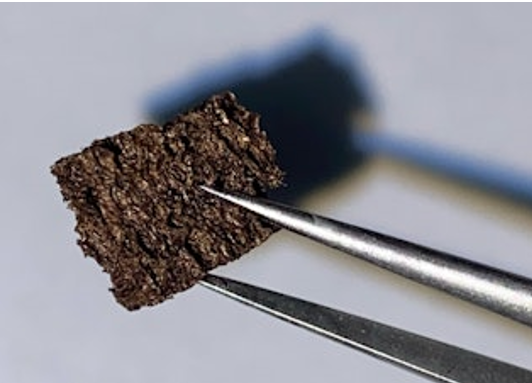
Source: Caroline Harms/Northwestern University
Northwestern University engineers have developed a new sponge that can remove metals — including toxic heavy metals like lead and critical metals like cobalt — from contaminated water, leaving safe, drinkable water behind.
In proof-of-concept experiments, the researchers tested their new sponge on a highly contaminated sample of tap water, containing more than 1 part per million of lead. With one use, the sponge filtered lead to below detectable levels.
After using the sponge, researchers also were able to successfully recover metals and reuse the sponge for multiple cycles. The new sponge shows promise for future use as an inexpensive, easy-to-use tool in home water filters or large-scale environmental remediation efforts.
The study was published late yesterday (May 10) in the journal ACS ES&T Water. The paper outlines the new research and sets design rules for optimizing similar platforms for removing — and recovering — other heavy-metal toxins, including cadmium, arsenic, cobalt, and chromium.
“The presence of heavy metals in the water supply is an enormous public health challenge for the entire globe,” said Northwestern’s Vinayak Dravid, senior author of the study. “It is a gigaton problem that requires solutions that can be deployed easily, effectively, and inexpensively. That’s where our sponge comes in. It can remove the pollution and then be used again and again.”
Dravid is the Abraham Harris Professor of Materials Science and Engineering at Northwestern’s McCormick School of Engineering and director of global initiatives at the International Institute for Nanotechnology.
Sopping up spills
The project builds on Dravid’s previous work to develop highly porous sponges for various aspects of environmental remediation. In May 2020, his team unveiled a new sponge designed to clean up oil spills. The nanoparticle-coated sponge, which is now being commercialized by Northwestern spinoff MFNS Tech, offers a more efficient, economic, ecofriendly, and reusable alternative to current approaches to oil spills.
But Dravid knew it wasn’t enough. “When there is an oil spill, you can remove the oil,” he said. “But there also are toxic heavy metals — like mercury, cadmium, sulfur, and lead — in those spills. So, even when you remove the oil, some of the other toxins might remain.
Rinse and repeat
To tackle this aspect of the issue, Dravid’s team, again, turned to sponges coated with an ultrathin layer of nanoparticles. After testing many different types of nanoparticles, the team found that a manganese-doped goethite coating worked best. Not only are manganese-doped goethite nanoparticles inexpensive to make, easily available and nontoxic to humans, but they also have the properties necessary to selectively remediate heavy metals.
“You want a material with a high surface area, so there’s more room for the lead ions to stick to it,” said Benjamin Shindel, a Ph.D. student in Dravid’s lab and the paper’s first author. “These nanoparticles have high-surface areas and abundant reactive surface sites for adsorption and are stable, so they can be reused many times.”
The team synthesized slurries of manganese-doped goethite nanoparticles, as well as several other compositions of nanoparticles, and coated commercially available cellulose sponges with these slurries. Then, they rinsed the coated sponges with water in order to wash away any loose particles. The final coatings measured just tens of nanometers in thickness.
When submerged into contaminated water, the nanoparticle-coated sponge effectively sequested lead ions. The U.S. Food and Drug Administration requires that bottled drinking water is below 5 parts per billion of lead. In filtration trials, the sponge lowered the amount of lead to approximately 2 parts per billion, making it safe to drink.
“We’re really happy with that,” Shindel said. “Of course, this performance can vary based on several factors. For instance, if you have a large sponge in a tiny volume of water, it will perform better than a tiny sponge in a huge lake.”
Recovery bypasses mining
From there, the team rinsed the sponge with mildly acidified water, which Shindel likened to “having the same acidity of lemonade.” The acidic solution caused the sponge to release the lead ions and be ready for another use. Although the sponge’s performance declined after the first use, it still recovered more than 90% of the ions during subsequent use cycles.
This ability to gather and then recover heavy metals is particularly valuable for removing rare, critical metals, such as cobalt, from water sources. A common ingredient in lithium-ion batteries, cobalt is energetically expensive to mine and accompanied by a laundry list of environmental and human costs.
If researchers could develop a sponge that selectively removes rare metals, including cobalt, from water, then those metals could be recycled into products like batteries.
“For renewable energy technologies, like batteries and fuel cells, there is a need for metal recovery,” Dravid said. “Otherwise, there is not enough cobalt in the world for the growing number of batteries. We must find ways to recover metals from very diluted solutions. Otherwise, it becomes poisonous and toxic, just sitting there in the water. We might as well make something valuable with it.”
Standardized scale
As a part of the study, Dravid and his team set new design rules to help others develop tools to target particular metals, including cobalt. Specifically, they pinpointed which low-cost and nontoxic nanoparticles also have high-surface areas and affinities for sticking to metal ions. They studied the performance of coatings of manganese, iron, aluminum, and zinc oxides on lead adsorption. Then, they established relationships between the structures of these nanoparticles and their adsorptive properties.
Called Nanomaterial Sponge Coatings for Heavy Metals (or “Nano-SCHeMe”), the environmental remediation platform can help other researchers differentiate which nanomaterials are best suited for particular applications.
“I’ve read a lot of literature that compares different coatings and adsorbents,” said Caroline Harms, an undergraduate student in Dravid’s lab and paper co-author. “There really is a lack of standardization in the field. By analyzing different types of nanoparticles, we developed a comparative scale that actually works for all of them. It could have a lot of implications in moving the field forward.”
Dravid and his team imagine that their sponge could be used in commercial water filters, for environmental clean-up or as an added step in water reclamation and treatment facilities.
“This work may be pertinent to water quality issues both locally and globally,” Shindel said. “We want to see this out in the world, where it can make a real impact.”
TRIZ: The use of Principles #24, Mediator and #31, Porous Materials, to filter out harmful contaminants (heavy-metals) from polluted water. Ideal Final Results is to have a robust filtering system that removes harmful contaminants and remains in continuous use, Principle #20. Also, recapturing the harmful contaminants and recycling them will generate a cashflow is Principle #22 and keep the contaminants from being dumped into the environment.
- Details
- Category: Inside TRIZ
Unmanned Aerial Vehicle is Based on da Vinci Aerial Screw Design

Crimson Spin, a small, unmanned aerial vehicle (UAV) — flies through the combined lift of four, whirring red spiral-shaped blades. (Image: UMD Design Team)
In the fifteenth century, artist and engineer Leonardo da Vinci envisioned a craft that flew using a single helix-shaped propeller — the aerial screw — viewed by many as the first vertical take-off and landing (VTOL) machine ever designed.
In 2020, the Vertical Flight Society’s (VFS) 37th Annual Student Design Competition challenged students from across the world to reimagine da Vinci’s design. Using modern-day analytical and design tools, students were tasked to design and demonstrate a feasible modern-day VTOL vehicle based on the aerial screw concept and demonstrate the consistency of its physics.
Unveiled at the Vertical Flight Society’s 2022 Transformative Vertical Flight Conference — Crimson Spin, a small, unmanned aerial vehicle (UAV) — flies through the combined lift of four whirring red spiral-shaped blades.
The craft was the culmination of more than two years’ worth of work stemming from UMD’s 2020 winning graduate entry. The prize-winning design, named Elico, derived its name from the Italian root for the words “helicopter,” “propeller,” “helix,” and “screw,” all rooted in Leonardo’s drawing of the aerial screw.
The design did in fact look functional — on paper and in computer simulations — but could it actually fly in reality? “We saw some really interesting behaviors in the lift mechanisms of the air screw in our computational fluid dynamics simulations and models, where we found an edge vortex that would form,” explained team member Ilya Semenov. “But with such a novel design, we couldn’t be 100 percent sure that the phenomenon was true, so creating a working model would help us validate if it was in fact happening.”
Developed as a technology demonstrator, Crimson Spin was designed as a fully autonomous, manned quadrotor vehicle, and improves on da Vinci’s design by using a tapered aerial screw rotor to provide all lift, thrust, and control of the vehicle. A modular framework allows Crimson Spin to adapt to changing mission requirements and has hover and forward flight capabilities. According to the team, it allows riders to experience the genius of Leonardo da Vinci first-hand, safely and easily, by using an all-electric power plant, ultralight composite airframe, and pushbutton operation.
“That first successful flight was an incredible moment,” said team member Austin Prete. “It took three months, just trying to get it to fly correctly.”
While the research and findings are far too preliminary to extract potential applications at this point, making a working model based on the design has been a success in and of itself.
“Just the way the air screw worked was surprising,” added James Sutherland, Ph.D. candidate and team captain of the 2020 design team. “It’s possible that the aerial screw might be less noisy or create less downwash than a regular rotor with the same amount of thrust, but there is still a lot to learn and study before we know where it could be applied.”
Prete added that another interesting finding of the design was that the screws can create the same amount of lift but with fewer rotations compared to a traditional rotor, which may contribute to the reduced downwash — a not insignificant issue when flying traditional rotorcrafts.
Since the technology is so new, the team agrees that characterizing the rotors is important so future work can be done to evaluate the aerial screw against existing rotor styles. That will help them to understand in what flight regimes the screw design might perform best.
“For example, can you make an adjustable rotor screw?” said Prete. “You can make adjustments to a traditional rotor inflight, so what adjustments could you make to an aerial screw mid-flight to change its performance?”
- Details
- Category: Inside TRIZ
MRI FOR ALL

by ADRIAN CHO 23 FEB 2023
Hyperfine’s Swoop, the first U.S. FDA–approved low-field brain scanner, can be
wheeled to a patient’s bedside. DEREK DUDEK/HYPERFINE
The patient, a man in his 70s with a shock of silver hair, lies in the neuro intensive care unit (neuro ICU) at Yale New Haven Hospital. Looking at him, you’d never know that a few days earlier a tumor was removed from his pituitary gland. The operation didn’t leave a mark because, as is standard, surgeons reached the tumor through his nose. He chats cheerfully with a pair of research associates who have come to check his progress with a new and potentially revolutionary device they are testing.
The cylindrical machine stands chest high and could be the brooding older brother of R2D2, the Star Wars robot. One of the researchers carefully guides the 630-kilogram self-propelled scanner up to the head of the bed, steering it with a joystick. Lifting the man by his bed sheet, the researchers help him ease his head into the Swoop—a portable magnetic resonance imaging (MRI) scanner made by a company called Hyperfine.
“Do you want ear plugs?” asks Vineetha Yadlapalli, the second researcher.
“Is it as loud as a regular MRI?”
“Not at all.”
“Then I guess I don’t need them.”
After propping up the patient’s legs to ease the strain on his back, Yadlapalli sets the machine to work, tapping in a few instructions from an iPad. The machine emits a low growl, then proceeds to beep and click. Within minutes, an image of the patient’s brain appears on Yadlapalli’s tablet.
For a half-hour, the man lies quietly, hands folded across his belly. He could be getting his hair set in an old-fashioned hair dryer. In a small way, he’s a pioneer helping take MRI where it’s never gone before.
In many cases, MRI sets the gold standard in medical imaging. The first useful MRI images emerged in the late 1970s. Within a decade, commercial scanners had spread through medicine, enabling physicians to image not just bone, but soft tissues. If doctors suspect you have had a stroke, developed a tumor, or torn cartilage in your knee, they’ll likely prescribe an MRI.
If you’re fortunate enough to be able to get one, that is. An MRI scanner employs a magnetic field to twirl atomic nuclei in living tissue—specifically the protons at the heart of hydrogen atoms—so that they emit radio waves. To generate the field, a standard scanner employs a large, powerful superconducting electromagnet that pushes a machine’s cost to $1.5 million or more, pricing MRI out of reach of 70% of the world’s population. Even in the United States, getting an MRI may require days of waiting and a midnight drive to some distant hospital. The patient must come to the scanner, not the other way around.
For years, some researchers have been striving to build scanners that use much smaller permanent magnets, made of the alloy often found in desk toys. They produce fields roughly 1/25th as strong as a standard MRI magnet, which once would have been far too weak to glean a usable image. But, thanks to better electronics, more efficient data collection, and new signal processing techniques, multiple groups have imaged the brain in such low fields—albeit with lower resolution than standard MRI. The result is scanners small enough to roll to a patient’s bed and possibly cheap enough to make MRI accessible across the globe.

The resolution of a brain scan from a low-field machine (first image) is coarser than conventional MRI (second image), but both images clearly reveal a hemorrhage. YALE SCHOOL OF MEDICINE
The machines mark a technological triumph. Kathryn Keenan, a biomedical engineer at the National Institute of Standards and Technology who is testing a Hyperfine scanner, says, “Everyone that comes through is super impressed that it even works.” Some say the scanners could also transform medical imaging. “We’re potentially opening up a whole new field,” says Kevin Sheth, a neurologist at the Yale School of Medicine who has worked extensively with the Swoop but has no financial interest in Hyperfine. “It’s not a question of ‘Is this going to happen?’ It’s going to be a thing.”
In August 2020, the Swoop became the first low-field scanner to win U.S. Food and Drug Administration (FDA) approval to image the brain, and physicians are putting it through clinical studies at Yale New Haven and elsewhere. Other devices are close behind. But Andrew McDowell, a physicist and founder of the consulting firm NeuvoMR, LLC, cautions it’s not clear there’s a market for a low-field scanner, with its lower resolution. “The real challenge is going to be convincing doctors to start using it,” he says. “That’s very difficult because for good reasons they’re very conservative.”
AN MRI SCANNER WORKS nothing like a camera; it is actually a radio that tunes in to protons in living tissue. Like a tiny compass needle, each proton is magnetic, and ordinarily the protons point randomly in all directions (see graphic, below). However, an external magnetic field can align them. At that point, a pulse of radio waves of the right frequency and duration can tip them by 90°. The aligned protons then twirl like gyroscopes, emitting a radio signal of their own, whose frequency increases with the field’s strength.
That fleeting monotone radio hum reveals little. To create an image, the scanner must distinguish among waves coming from different points in the body. To do this, it sculpts the magnetic field, which makes protons at different locations sing at different frequencies and states of synchrony. The scanner must also distinguish one type of tissue from another, which it does by exploiting the fact that the radio signals fade at different rates in different tissues.
One reason the signal dies out is that the protons knock one another out of alignment through their own magnetic fields. The rate at which this happens differs between, say, fatty brain matter and watery cerebrospinal fluid. To measure the rate, the scanner applies pairs of pulses. The first pulse creates a signal that fades as the orientations of twirling protons fan out. The second reverses much of that evolution, eliciting an echo of the signal. The proton-proton interactions mute that echo, however. So the scanner can measure their rate by tracking how the echo shrinks as the delay between the two pulses increases.
While applying pair after pair of pulses, the scanner must simultaneously sort the echoes coming from different points in the brain. To do that, it relies on magnetic field gradients applied at key moments. For example, a gradient applied during the echo from chin to crown makes protons in different sideways slices through the head radiate at different frequencies. A gradient applied between pulses and across the head will set protons in vertical slices ahead or behind in their twirling, a “phase” difference that makes echoes from some slices reinforce one another and others cancel. By varying the gradient, the scanner can deduce the strength of the echo from each slice.
Over many repetitions, the scanner gathers a plethora of echoes in which intensity varies with delay, frequency, and phase. A standard mathematical algorithm decodes them to produce a map of how the proton-proton interactions vary throughout the brain, forming one type of MRI image. Other pulse sequences probe other tissue-specific processes—such as how fast protons diffuse, which can track fluid flow.
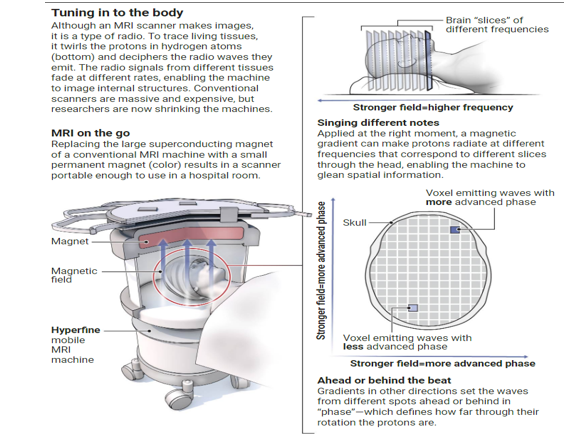
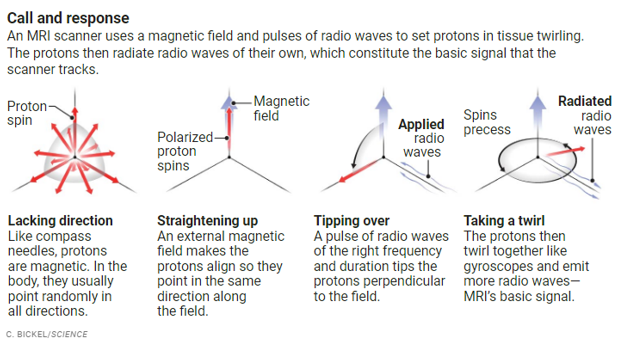
All that pulsing explains why MRI scans take time and why an MRI machine chirps, clicks, and buzzes. Those sounds emerge as mechanical stresses rattle the current-carrying coils that create the magnetic gradients. A technician can tell what kind of a scan a machine is doing just from those sounds, Yadlapalli says.
A stronger field makes all this easier by polarizing the protons more thoroughly and creating a bigger signal. A standard scanner’s magnet produces a field of 1.5 tesla—30,000 times as strong as Earth’s field—and some reach 3 or 7 tesla. Even so, the protons pointing along a 1.5-tesla field outnumber those pointing the other way by just 0.001%. Reduce the field strength by a factor of 25 and the polarization falls with it. The signal-to-noise ratio plummets even more, by a factor of nearly 300.
In principle, a low-field scanner could coax a signal from the noise by taking data over a longer time period—just as radio astronomers sift a weak signal from noise by training their dishes on a star for hours or days. That tack won’t work with a human, who can hold still only so long. So, in developing low-field MRI, researchers had to find ways to extract data much faster.
One key element is better hardware, says Joshua Harper, a neural engineer at the German Paraguayan University. “We now have really fast, really cheap electronics,” he says. “That’s really why it works.” Even so, doing low-field MRI in a hospital room is tricky. Metal in other machines and even the walls can distort the field, and static from other devices can disrupt the radio signal. So, scanners employ countermeasures. For example, Hyperfine’ s Swoop uses antennas to measure radio noise and cancel it, similar to how noise-canceling headphones block sound.
The new scanners also turn an aspect of the lower field to their advantage to run faster. To manipulate the protons, a high-field scanner must use higher frequency, higher energy radio waves, so it can pulse only so fast before it begins to heat the patient. Free of that speed limit, a low-field scanner can pulse faster and use more efficient pulse sequences, says Matthew Rosen of Massachusetts General Hospital, a physicist who co-founded Hyperfine. “We can interrogate very, very rapidly, doing things that you could never do at high field.”
Even so, gathering data fast enough for standard image reconstruction remains a challenge. One solution is to employ novel signal processing techniques, including artificial intelligence. Hyperfine engineers use a set of training images to teach a program called a neural network to construct brain images from relatively sparse data, says Khan Siddiqui, Hyperfine’ s chief medical officer and chief strategy officer. “That’s where our secret sauce comes in.”
Compared with a standard scan, a low-field image looks blurrier. Still, physicists see its beauty. “It’s this incredible physics success story,” Rosen says. “It’s not just we pointy headed physicists [goofing] off and doing stuff that nobody cares about.” The technology vindicates those toiling in a forgotten corner of the field, McDowell says. “Who in their right mind would build a 65-millitesla machine when the glory is in building the 11-tesla one?”
HYPERFINE SAYS ITS SWOOP SCANNER is off to a pretty glorious start. It has sold more than 100 of the machines, mostly in the United States, at about $250,000 apiece. The goal is not to replace high-field scanners, but to expand how MRI is used, Siddiqui says. “Our portable scanner brings MRI closer to the patient, both in time and in distance.” Hyperfine envisions using it in the neuro ICU to quickly assess patients too ill or unstable to wheel to a conventional MRI or a CT machine, which produces a type of 3D x-ray.
A Swoop’s magnet consists of two disks and produces a field of 64 millitesla. A scan from it feels dramatically different from a standard scan. In a conventional scanner, an automated table glides you bodily into the cylindrical magnet. With the Swoop, an able patient can scooch into the magnet as if wriggling under a car’s bumper. A helmetlike head piece containing the antennas cradles your head so snugly it may touch your nose, yet your arms and legs are free. The machine’s chirping is soft, even soothing.
In late 2019 and early 2020, as the coronavirus pandemic took hold, Sheth and colleagues tested the Swoop’s promise by scanning 50 ICU patients, including 20 with COVID-19. Because many were on ventilators and sedated, “we had no idea what their neurological status was and no way to take a look by any available imaging modality,” Sheth recalls. “And this provided us a way to do that at the bedside.” The scans revealed brain trauma in 37 cases, including eight COVID-19 patients, the researchers reported in January 2021 in JAMA Neurology.
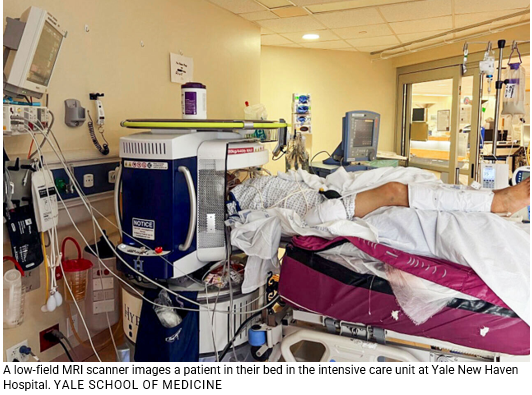
A low-field MRI scanner images a patient in their bed in the intensive care unit at Yale New Haven
Hospital. YALE SCHOOL OF MEDICINE
The cheaper, smaller machines might also allow patients to get more frequent follow-up scans. That’s a prospect that resonates with Ronald Walsworth, a physicist at the University of Maryland, College Park, and co-founder of Hyperfine. In 2007, his then–2-year-old son developed a noncancerous brain tumor. He was treated successfully, says Walsworth, who serves on Hyperfine’s advisory board. Still, he says, “There were signs that were not caught early and things that were not decided most efficiently because the MRIs only could happen once in a while.”
The Swoop’s advantages have won it fans. “Oh, my God, what a beautiful, beautiful piece of technology,” says Steven Schiff, a pediatric neurosurgeon at Yale University who has no financial interest in Hyperfine. Still, the Swoop can miss details a high-field scanner would catch because its resolution of 1.5 millimeters is half that of a standard scanner. For example, Sheth’s team used it to image the brains of 50 patients who had had an ischemic stroke, visible with standard MRI. The Swoop missed the five smallest, millimeter-size strokes, the researchers reported in April 2022 in Science Advances.
That finding shows physicians will have to exercise judgment in deciding when to use each type of scanner, Sheth says. “You shouldn’t be too worried, but you should understand the context in which you might miss something,” he says. Still, McDowell notes doctors may shy away from a low-field scanner if they think using it could leave them open to a malpractice suit.
IN MUCH OF THE WORLD, MRI is simply unavailable. A team in the Netherlands hopes its scanner will change that. Its magnet differs dramatically from the Swoop’s. It consists of 4098 cubes of neodymium iron boron—an alloy developed in the 1980s by carmakers—embedded in a hollow plastic cylinder, and arranged in a configuration called a Halbach array to produce a uniform horizontal field. “Our system is intrinsically better and has fewer distortions,” asserts Andrew Webb, an MRI physicist at Leiden University Medical Centre, so it requires less help from processing such as machine learning.
A private company, Multiwave Technologies in Switzerland, is trying to bring the scanner to market. It will apply for FDA approval this year and aims to rent its machines in a subscription model, says Tryfon Antonakakis, Multiwave’s co-CEO. “Our goal is to make it as affordable as possible and not necessarily to be in the hospital,” says Antonakakis, an engineer and applied mathematician. “We are looking to go into the mountains, into the medical deserts in developing countries.”
Webb and his colleagues, including Martin van Gijzen, an applied mathematician at the Delft University of Technology, have another plan for spreading their technology: giving it away. “We made the decision—Martin, myself, all our team—that we were not going to patent things,” Webb says. “Everything is going to be open source,” so that anyone can download their design from the internet and build scanners. Webb and colleagues hope entrepreneurs in developing nations will manufacture them locally.
To seed the idea, they shipped a scanner, packaged as a kit, to Johnes Obungoloch, a biomedical engineer at Mbarara University of Science and Technology in Uganda, who was a graduate student at Pennsylvania State University, University Park, when Webb and Schiff were also there. In September 2022, Webb and others flew to Uganda to help Obungoloch and his team assemble the scanner in 11 days.
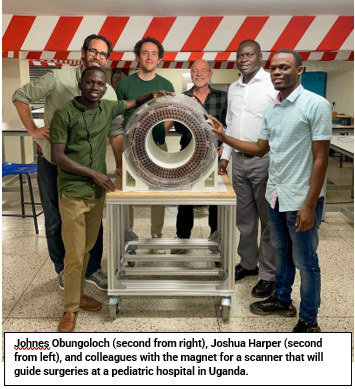
Soon it will be put to use in a project to test the utility of low-field MRI in the developing world. The CURE Children’s Hospital of Uganda, a 55-bed pediatric neurosurgical facility in Mbale run by an international nonprofit, plans to compare Obugoloch’s scanner, a Swoop, and a CT scanner. Doctors will image children with hydrocephalus, in which cerebrospinal fluid collects in the brain and compresses it, potentially causing debilitating or fatal damage. Globally, hydrocephalus afflicts 400,000 children every year, and it accounts for 75% of the CURE hospital’s patients. In Africa, an infection is the usual cause..For years, Schiff and colleagues at the hospital have used CT scans to guide an innovative surgery that allows the fluid to drain into the brain’s ventricles—an alternative to installing a shunt to the abdomen. However, a CT scan exposes children to considerable x-ray radiation, so CURE doctors will see whether low-field MRI images can guide surgeons. “If the MRI proves comparable to the CT scan, then there is no reason why we should be using the CT scan anymore,” says Ronald Mulondo, a physician at CURE who directs the project.
The study is awaiting final governmental approval. If it’s successful, Obungoloch envisions building more scanners, perhaps for Africa’s six other CURE hospitals, and even sourcing some of the parts locally. Uganda has public health care, so that vision depends on government funding, he says.
Still, like their peers elsewhere, doctors in Uganda may have reservations about the technique’s limited resolution, Obungoloch notes. “The radiologists see it and say, ‘Well, this is a crappy image, and we don’t care how long it took you to acquire it.’” Government officials may also think Ugandans shouldn’t have to settle for lower resolution imaging, no matter how useful, he says.
In truth, developers of low-field MRI are pushing for nothing less than a rethink of medical imaging. “Is the best technology the scanner that can provide the highest quality images or is it the scanner that can lead to the most improved patient outcomes?” asks Harper, who collaborated on Webb’s open-source rig and hopes to acquire a Swoop.
What will win over doctors, Sheth says, will be a “use case”—a killer app for the scanners. For example, they might be put into special ambulances for stroke care. He questions whether Hyperfine and others have found that use case but predicts it will come.
file:///C:/Users/Owner/AppData/Local/Temp/msohtmlclip1/01/clip_image017.jpg" alt="Adrian Cho" width="86" height="120" />Then there are patients to win over. After his time in the Hyperfine scanner, the pituitary tumor patient confides to Yadlapalli that it wasn’t quite as comfortable as a regular MRI. Noting that he still can’t breathe through his nose because of the surgery, he says the snug-fitting head basket bothered him. “I’d rather be scooted over to a real MRI.” Call him a reluctant pioneer.
ABOUT THE AUTHOR
Adrian Cho, Author, Staff Writer
TRIZ Notes: This new MRI system has been reduced in size, weight, do it in reverse and convenient to use. The system is more IDEAL and will continue to evolve closer to the IFR. Just needs a few more “S” curves.
- Details
- Category: Inside TRIZ
Innovation for Urgency:
Understanding the Different Types of Innovations
by admin | Mar 10, 2023 |Innovation
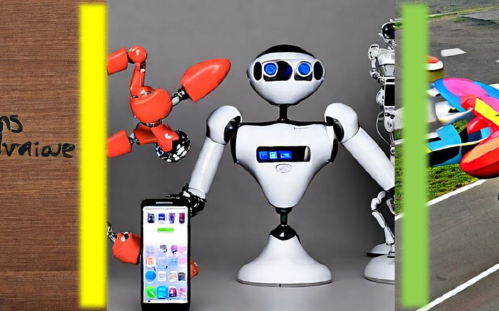
IntroductionInnovation is a key driver of progress and success in any industry. However, not all innovations are created equal. Innovation can be classified in terms of impact or urgency. Impact-driven innovation is motivated by the desire to make more financial profits; impact is not necessarily seen as an impact for a better world. Urgency-driven innovation is driven by the need to address a problem that has pressing aspects on human quality of life; here impact is seen from the perspective of quality of life in general, including the positive impact on flora and fauna. Both types of innovation are essential for different industries and situations. Some innovations focus on addressing progress and superior performance, while others are designed to stop or control negative effects. Additionally, some innovations go beyond control and aim to eliminate problems altogether. In this post, we will explore the different types of innovations and their impact on industries.
Classification based on urgency for quality of lifeClassification based on urgency for quality of life
One type of innovation is the “vitamin” type. This innovation focuses on addressing progress and superior performance. It involves creating products or services that improve an existing process or provide a better experience for the user. This type of innovation is essential for industries that want to stay competitive and continue to grow. Examples of vitamin-type innovations include smartphones, high-performance vehicles, and advanced medical equipment.Some more examples in this category are:
• The introduction of smartphones with new features, such as higher resolution cameras and more powerful processors, improves the performance of previous models.
• The introduction of smartphones with new features, such as higher resolution cameras and more powerful processors, improves the performance of previous models.
• The development of new materials, such as graphene, that offer improved mechanical and electrical properties compared to traditional materials.
• The creation of more efficient solar cells that generate more electricity per unit area.
• Apple’s Air Pods Pro with noise-canceling technology enhances the user experience.
• Tesla’s electric cars offer superior performance compared to traditional combustion engine cars (YES! It is only a vitamin-type innovation. Why? Please, have a look here)
• Google’s search algorithm updates improve the accuracy and relevance of search results.

Another type of innovation is the “analgesic” type. This innovation focuses on stopping or keeping some negative effects under control. It involves creating products or services that address a problem or limitation of an existing product. This type of innovation is crucial for industries that want to prevent negative effects from impacting their business. Examples of analgesic-type innovations include cybersecurity software, pollution control systems, and safety equipment.
Examples in this category are also the followings:
• The development of vaccines and treatments for diseases, such as the COVID-19 vaccines, that help to mitigate the negative effects of the illness.
• The introduction of filters in cigarettes to reduce the amount of harmful chemicals that are released when smoking.
• The use of pollution control devices in factories to reduce the amount of harmful emissions released into the environment.
• Robots that collect waste from lakes and rivers to reduce the amount of harmful effects on environment.
• Robots that collect waste from lakes and rivers to reduce the amount of harmful effects on environment.
• Lifting car-parking that can park 20 cars on the surface covered by 3 cars.
• Water filters that remove harmful contaminants from drinking water, keeping people healthy and safe.
• Noise-cancelling headphones that reduce stress and fatigue caused by loud noises.
• Apps that limit screen time to help prevent digital addiction and associated negative effects.
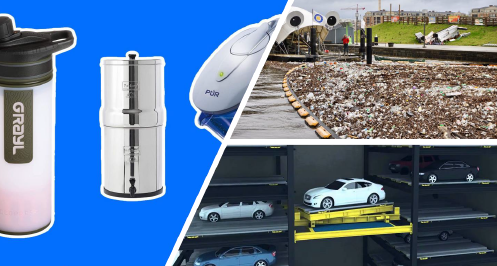
The “antibiotic” type of innovation takes things to the next level. This type of innovation aims to eliminate problems or negative effects altogether. It involves creating products or services that fundamentally change the way things are done, often creating entirely new industries. This type of innovation is essential for industries that want to stay ahead of the curve and address major problems in a game-changing way. Examples of antibiotic-type innovations include renewable energy sources, autonomous vehicles, and artificial intelligence.The “antibiotic” type of innovation takes things to the next level. This type of innovation aims to eliminate problems or negative effects altogether. It involves creating products or services that fundamentally change the way things are done, often creating entirely new industries. This type of innovation is essential for industries that want to stay ahead of the curve and address major problems in a game-changing way. Examples of antibiotic-type innovations include renewable energy sources, autonomous vehicles, and artificial intelligence.Examples we can add here are also:
• The development of antibiotics to treat bacterial infections, which have helped to reduce mortality rates from infectious diseases.
• The introduction of water treatment technologies, such as chlorination and filtration, that have helped to eliminate waterborne diseases in developed countries.
• The creation of renewable energy sources, such as wind and solar power, that help to eliminate reliance on fossil fuels and reduce carbon emissions.
• Recycling technology that can convert waste materials into usable products is an “antibiotic” type innovation in the waste management industry. It aims to eliminate the negative effects of waste, including environmental pollution and resource depletion.
• Tesla Powerwall – addresses the elimination of energy problems by providing an efficient and sustainable energy storage solution for households and businesses.
• Zero Waste manufacturing – addresses the elimination of waste problems by designing manufacturing processes that eliminate waste, increase efficiency, and reduce environmental impact.
• Automated Inventory Management Systems – addresses the elimination of inventory problems by using sensors, machine learning, and analytics to optimize inventory levels, reduce waste, and improve supply chain efficiency.
• Carbon Capture Technology – addresses the elimination of carbon emissions by capturing and storing carbon dioxide emissions from industrial processes before they are released into the atmosphere.

All three categories of innovations have the potential to be of interest to investors, depending on the specific context and industry.All three categories of innovations have the potential to be of interest to investors, depending on the specific context and industry.
Vitamin-type innovations, which focus on progress and superior performance, may be particularly appealing to investors looking for growth opportunities and high returns on investment.
Analgesic-type innovations, which address negative effects or problems that already exist, may also be attractive to investors if they offer cost savings or other benefits to customers.
Antibiotic-type innovations, which aim to eliminate problems or negative effects, may be less immediately attractive to investors because they often require significant investment and may take longer to generate returns. However, these types of innovations may be more valuable in the long term as they can create new markets or disrupt existing ones and may also have more significant social and environmental impacts.
Conclusions
Understanding the different types of innovations and their potential impact can help individuals and organizations prioritize their efforts and investments. While all types of innovations have value, it is important to recognize that analgesic and antibiotic innovations have a significant impact on society and can offer attractive investment opportunities. These types of innovations may not receive the same level of attention as vitamin-type innovations because of much higher research and development risks, but they can provide more stable and predictable returns on investment over the long term. Usually in hackathons we see vitamin-type innovations, which are not necessarily the stringent ones for humankind. We must address this issue and find new models to support ideation and development around analgesic and antibiotic-types of innovations. It is worth considering how these different types of innovations are addressed in different industries and sectors. Furthermore, it is important to consider the potential trade-offs and unintended consequences of each type of innovation. For example, an impact-driven innovation may generate significant financial returns, but it may also have negative societal or environmental impacts. Similarly, an analgesic-type innovation or even an antibiotic-type innovation may solve a particular problem, but it may also create new problems or unintended consequences. So, we have to analyze any type of innovation in a holistic way and from multiple angles, over their life-cycles, over the supply and value chains, etc.Innovation is a complex and multifaceted process, and there is no one-size-fits-all approach to addressing the challenges and opportunities that it presents. By understanding the different types of innovations and their potential impact, individuals and organizations can make more informed decisions about where to focus their efforts and investments, and how to balance short-term and long-term goals.
—————
Credits: Stelian Brad
- Details
- Category: Inside TRIZ
Keeping Drivers Safe with a Road That Can Melt Snow, Ice on Its Own
The researchers prepared a sodium acetate salt and combined it with a surfactant, silicon dioxide, sodium bicarbonate and blast furnace slag.
American Chemical Society Feb 17, 2023

Adapted from ACS Omega 2023, DOI: 10.1021/acsomega.2c07212
Slipping and sliding on snowy or icy roads is dangerous. Salt and sand help melt ice or provide traction, but excessive use is bad for the environment. And sometimes, a surprise storm can blow through before these materials can be applied. Now, researchers reporting in ACS Omega have filled microcapsules with a chloride-free salt mixture that’s added into asphalt before roads are paved, providing long-term snow melting capabilities in a real-world test.
Driving on snowy roads at or near-freezing temperatures can create unsafe conditions, forming nearly invisible, slick black ice, if roads aren’t cleaned quickly enough. But the most common ways to keep roads clear have significant downsides:
- Regular plowing requires costly equipment, is labor intensive and can damage pavement.
- Heavy salt or sand applications can harm the environment.
- Heated pavement technologies are prohibitively expensive to use on long roadways.
Recently, researchers have incorporated salt-storage systems into “anti-icing asphalt” to remove snow and prevent black ice from forming. However, these asphalt pavements use corrosive chloride-based salts and only release snow-melting substances for a few years. So, Yarong Peng, Quansheng Zhao, Xiaomeng Chu and colleagues wanted to develop a longer-term, chloride-free additive to effectively melt and remove snow cover on winter roads.
The researchers prepared a sodium acetate salt and combined it with a surfactant, silicon dioxide, sodium bicarbonate and blast furnace slag — a waste product from power plant operations — to produce a fine powder. They then coated the particles in the powder with a polymer solution, forming tiny microcapsules. Next, the team replaced some of the mineral filler in an asphalt mixture with the microcapsules.
In initial experiments, a pavement block made with the new additive lowered the freezing point of water to -6 F. And the researchers estimated that a 5-cm-thick layer of the anti-icing asphalt would be effective at melting snow for seven to eight years. A real-world pilot test of the anti-icing asphalt on the off-ramp of a highway showed that it melted snow that fell on the road, whereas traditional pavement required additional removal operations. Because the additive used waste products and could release salt for most of a road’s lifetime, the researchers say that is a practical and economic solution for wintertime snow and ice removal.
TRIZ: Slippery, icy roads are dangerous to drive on. The Ideal Final Result concept tells us that the system should fix itself using resources that are readily available and free/low cost. The main component of the road system is the road, more accurately, the black top. The road surface should be able to melt/remove snow and ice. By merging (Prin #5) a low cost additive to the black top, we should be able to provide an environment where the road itself will melt the snow and ice.
- Details
- Category: Inside TRIZ
Engineers Grow “perfect” atom-thin Materials on
Industrial Silicon Wafers
Their technique could allow chip manufacturers to produce next-generation transistors based on materials other than silicon.
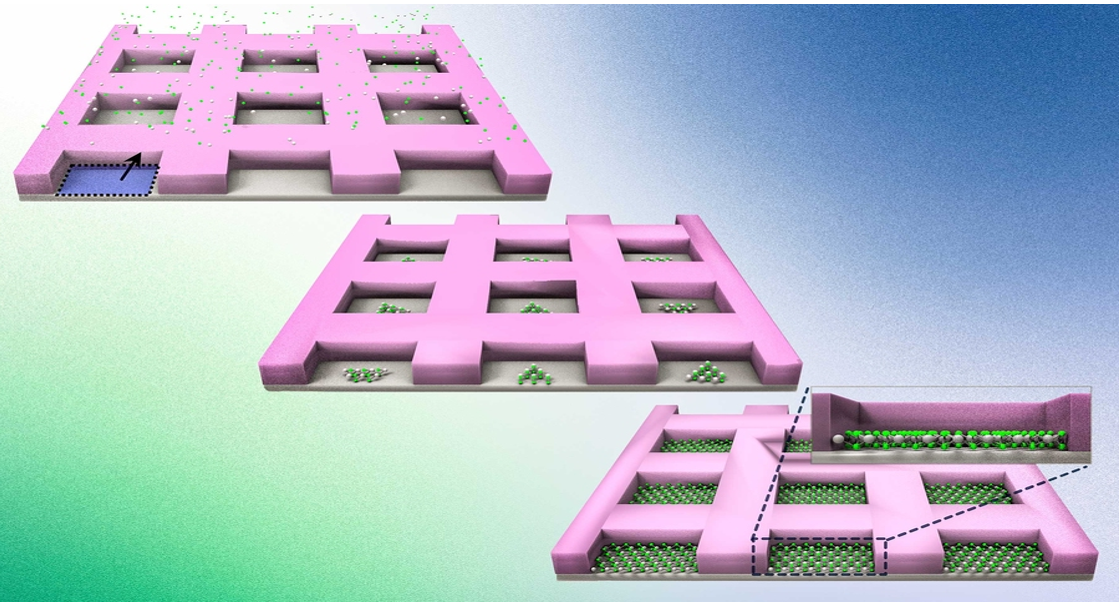
MIT engineers grow “perfect” atom-thin materials on industrial silicon wafers. Their technique could allow chip manufacturers to produce next-generation transistors based on materials other than silicon.
Jennifer Chu | MIT News Office Publication Date: January 18, 2023
Caption: By depositing atoms on a wafer coated in a “mask” (top left), MIT engineers can corral the atoms in the mask’s individual pockets (center middle), and encourage the atoms to grow into perfect, 2D, single-crystalline layers (bottom right).
Credits: Courtesy of the researchers. Edited by MIT News.
Engineers grow defect-free, atomically thin films on top of silicon wafers; new method may allow computer chipmakers to produce 2D transistors for electronics.
True to Moore’s Law, the number of transistors on a microchip has doubled every year since the 1960s. But this trajectory is predicted to soon plateau because silicon — the backbone of modern transistors — loses its electrical properties once devices made from this material dip below a certain size.
Enter 2D materials — delicate, two-dimensional sheets of perfect crystals that are as thin as a single atom. At the scale of nanometers, 2D materials can conduct electrons far more efficiently than silicon. The search for next-generation transistor materials therefore has focused on 2D materials as potential successors to silicon.
But before the electronics industry can transition to 2D materials, scientists have to first find a way to engineer the materials on industry-standard silicon wafers while preserving their perfect crystalline form. And MIT engineers may now have a solution.
The team has developed a method that could enable chip manufacturers to fabricate ever-smaller transistors from 2D materials by growing them on existing wafers of silicon and other materials. The new method is a form of “nonepitaxial, single-crystalline growth,” which the team used for the first time to grow pure, defect-free 2D materials onto industrial silicon wafers.
With their method, the team fabricated a simple functional transistor from a type of 2D materials called transition-metal dichalcogenides, or TMDs, which are known to conduct electricity better than silicon at nanometer scales.
“We expect our technology could enable the development of 2D semiconductor-based, high-performance, next-generation electronic devices,” says Jeehwan Kim, associate professor of mechanical engineering at MIT. “We’ve unlocked a way to catch up to Moore’s Law using 2D materials.”
Kim and his colleagues detail their method in a paper appearing today in Nature. The study’s MIT co-authors include Ki Seok Kim, Doyoon Lee, Celesta Chang, Seunghwan Seo, Hyunseok Kim, Jiho Shin, Sangho Lee, Jun Min Suh, and Bo-In Park, along with collaborators at the University of Texas at Dallas, the University of California at Riverside, Washington University in Saint Louis, and institutions across South Korea.
A crystal patchwork
To produce a 2D material, researchers have typically employed a manual process by which an atom-thin flake is carefully exfoliated from a bulk material, like peeling away the layers of an onion.
But most bulk materials are polycrystalline, containing multiple crystals that grow in random orientations. Where one crystal meets another, the “grain boundary” acts as an electric barrier. Any electrons flowing through one crystal suddenly stop when met with a crystal of a different orientation, damping a material’s conductivity. Even after exfoliating a 2D flake, researchers must then search the flake for “single-crystalline” regions — a tedious and time-intensive process that is difficult to apply at industrial scales.
Recently, researchers have found other ways to fabricate 2D materials, by growing them on wafers of sapphire — a material with a hexagonal pattern of atoms which encourages 2D materials to assemble in the same, single-crystalline orientation.
“But nobody uses sapphire in the memory or logic industry,” Kim says. “All the infrastructure is based on silicon. For semiconductor processing, you need to use silicon wafers.”
However, wafers of silicon lack sapphire’s hexagonal supporting scaffold. When researchers attempt to grow 2D materials on silicon, the result is a random patchwork of crystals that merge haphazardly, forming numerous grain boundaries that stymie conductivity. “It’s considered almost impossible to grow single-crystalline 2D materials on silicon,” Kim says. “Now we show you can. And our trick is to prevent the formation of grain boundaries.”
Seed pockets
The team’s new “nonepitaxial, single-crystalline growth” does not require peeling and searching flakes of 2D material. Instead, the researchers use conventional vapor deposition methods to pump atoms across a silicon wafer. The atoms eventually settle on the wafer and nucleate, growing into two-dimensional crystal orientations. If left alone each “nucleus,” or seed of a crystal, would grow in random orientations across the silicon wafer. But Kim and his colleagues found a way to align each growing crystal to create single-crystalline regions across the entire wafer.
To do so, they first covered a silicon wafer in a “mask” — a coating of silicon dioxide that they patterned into tiny pockets, each designed to trap a crystal seed. Across the masked wafer, they then flowed a gas of atoms that settled into each pocket to form a 2D material — in this case, a TMD. The mask’s pockets corralled the atoms and encouraged them to assemble on the silicon wafer in the same, single-crystalline orientation.
“That is a very shocking result,” Kim says, “You have single-crystalline growth everywhere, even if there is no epitaxial relation between the 2D material and silicon wafer.” With their masking method, the team fabricated a simple TMD transistor and showed that its electrical performance was just as good as a pure flake of the same material.
They also applied the method to engineer a multilayered device. After covering a silicon wafer with a patterned mask, they grew one type of 2D material to fill half of each square, then grew a second type of 2D material over the first layer to fill the rest of the squares. The result was an ultrathin, single-crystalline bilayer structure within each square. Kim says that going forward, multiple 2D materials could be grown and stacked together in this way to make ultrathin, flexible, and multifunctional films.
“Until now, there has been no way of making 2D materials in single-crystalline form on silicon wafers, thus the whole community has been struggling to realize next-generation processors without transferring 2D materials,” Kim says. “Now we have completely solved this problem, with a way to make devices smaller than a few nanometers. This will change the paradigm of Moore’s Law.”
This research was supported in part by the U.S. Defense Advanced Research Projects Agency, Intel, the IARPA MicroE4AI program, MicroLink Devices, Inc., ROHM Co., and Samsung.
TRIZ Applications: Follow Lines of Evolution, system should get larger or smaller. Principles of using a mediator and thin films. What other TRIZ tools do you find in the paper?
- Details
- Category: Inside TRIZ
Exploring the Effectiveness of Inventive Principles of TRIZ on Developing researchers’ innovative capabilities: a case study in an innovative Research Center
Mostafa Jafari, Peyman Akhavan, Hamaid R. Zarghami, and Naser Asgari
Department of Industrial Engineering, Iran University of Science and Technology, Tehran, Iran
Abstract
Purpose – The purpose of this paper is to explore the efficacy of 40 inventive principles of TRIZ for developing researchers’ innovative capabilities and to evaluate the extent of application of “40 inventive principles” by inventors In Research Center of Intelligent and Signal Processing (A Successful research center that is producing new products in the field of signal processing and medical engineering).
Design/methodology/approach
– A range of relevant literature is explored initially. A questionnaire about 40 inventive principles of TRIZ was developed based on literature review.
Finally, a data analysis including descriptive statistics, correlation and regression analysis was designed by using SPSS software.
Findings –
The results showed that about 71% of the researchers have employed TRIZ above the average in their innovative products. Also these studied researchers used TRIZ principles unintentionally. Therefore, if this research center and similar institutes want to make full use of their Researchers’ abilities, they can facilitate innovation through offering courses on TRIZ, the principles of TRIZ and its other tools to them.
Research limitations/implications
– This research explore the using of 40 inventive principles as TRIZ simplest tools in an innovative research center without information of TRIZ field. It may need further research to be exploring through other tools of TRIZ and repeat this work in organizations using TRIZ with information from it. Although all of selected researchers were inventor and elite in their fields but a limitation of this research is exploring one successful research center and it can be done in a spread area in all of industries for generalized results. It is needed to note this research is a start for evaluate of using from TRIZ principles and continuing this work was needed through other researchers in all of field and organizations in all of countries.
Originality/value
– This study is probably the first to provide an exploring of TRIZ inventive principles applications through a research center. Using finding of this research, this research center and other similar research organizations interested in implementing innovative problem-solving techniques will be more familiar with some benefits of TRIZ implementation in innovative accelerate for innovative problem solving in today’s complex competitive environment.
This research is somewhat different from previous works and the way of doing this research is unique in the world.
We explore efficacy of TRIZ inventive principles on researchers’ innovative capabilities through unintentional and intentional using from TRIZ principles by researchers of a successful inventor research center which have powerful researchers at field of signal processing. It is needed to note this research is a start for evaluate of using from TRIZ principles and continuing this work was needed through other researchers in all of field and organizations.
Keywords: Systematic innovation, TRIZ, 40 inventive principles, Researchers’ innovative capabilities, NPD.
The present research has been conducted in order to assess the usage and efficacy of the 40 inventive principles of TRIZ for developing researchers’ innovative capabilities. In other words, it was done to find out whether the principles formulated by Altshuller through an analysis of inventions in the past, are used by contemporary inventor researchers who are not familiar with TRIZ in our case, and whether explaining these principles can result in enhancing the ability of researchers to use existing knowledge more efficiently. In fact, contemporary researchers and those who lived before Altshuller have this in common, that they all had no understanding of TRIZ. We have made an effort to show how much the researchers in the Research Center of Intelligent Signal Processing, as a successful producer of inventive products, use the principles of TRIZ? The results showed that about 71% of the researchers have employed TRIZ above the average and the main hypothesis (H1) of the research was confirmed with confidence level of 95%. It means most researchers used TRIZ principles more than the average number. A considerable finding was that all 41 people who were selected from a population of 50 researchers said they didn’t know anything about TRIZ. It means the researchers used TRIZ principles unintentionally. Considering that the research center is an organization with lots of laboratories along with hardware and software facilities that help develop medical equipment and produce software for processing life indicators, probably the results achieved from this research center could be generalized to a wider population and to similar institutes. We could conclude that if this research center and similar institutes want to make full use of their researchers’ abilities, they should facilitate innovation through offering courses on systematic innovation, such as the principles of TRIZ to their employees; thanks to the researchers conducted by Altshuller, his students, and other scholars, TRIZ has already provided us with required tools. Exploring all innovative aspects of TRIZ needs a period of time as long as its existence. In addition, a trial-and-error approach to innovation is neither scientifically nor economically in the 3rd millennium. So, we can conclude that TRIZ could be applied for improving researchers’ capabilities. So, it would be good ideas to introduce TRIZ to knowledge-workers and researchers in research organizations in order to use its potential for developing their innovative practices. This research also shows that the priority given to each principle varies among researchers (see, table 5). This result supported previous findings in ranking principles about different ranking of principle in different fields (Mann, 2004a; Mann, 2004b). It was revealed that there is a positive and significant correlation between “using TRIZ principles” and “making use of previously invented methods to develop new products”. Considering that the philosophy of TRIZ is to summarize the knowledge of innovation so that inventors in any field of science would take advantage of it, the correlation between using previously invented methods and using TRIZ principles shows that TRIZ has done its best to summarize and simplify innovative principles. Regression analysis in table 7 shows, 60 percent of changing of “extent of unintentional usage of TRIZ principles by researchers” is predicted by” the extent of utilization of results of previously innovative products”. It also shows more extent of utilization of results of previously innovative products by researchers leads to higher unintentionally using from TRIZ inventive principles. So, Altshuller studied the previous patents completely and represents an excellent category of innovative principles (TRIZ). As it wasn’t observed any relationship between trial-and-error approach, the number of accomplished inventive projects, age and another demographic features and using TRIZ principles, we can conclude that these factors don’t affect the result of using TRIZ principles. Besides, more experience and other surveyed factors can’t lead to higher unintentionally using from TRIZ inventive principles, so we strongly suggest that innovators need to have access to these tools to increase their innovative capabilities through TRIZ intentionally with applicable learning of 40 inventive principles and other TRIZ tools. Perhaps evaluation of the usage of TRIZ, especially in terms of intentional or unintentional usage is carried out in the present research for the first time. It seems no similar research has ever been conducted in such organized and scientific fashion that is done in this research in the studied field.
Suggestions for Further Research
Considering that this research is the first scientific survey conducted on the use of TRIZ (basis not availability books and papers about it), it is necessary to evaluate the use of TRIZ principles in other innovative organizations to find out the efficacy of TRIZ in a more comprehensive way. In addition, other researchers might work on the practical methods of encouraging innovators to use TRIZ; they might work on training innovators to use correct and effective techniques of TRIZ as well. And researchers from other countries can make use of the same procedure to evaluate intentional and unintentional uses of TRIZ principles in creative institutes of their countries. For generalizing these results, a number of spread surveys at many innovative research organizations are need with the way of present research.
- Details
- Category: Inside TRIZ
Trashfence Catches a Garbage Tsunami Heading Downriver

Ben Munson, Unit, 202 Productions Eric Sorensen Jul 28, 2022

Trash is everywhere. It’s on land, where it sometimes piles so high it becomes a smoldering mountain. It’s in space, where it breaks down differently while moving at blistering speeds and battered. And it’s in our water, which sometimes forms huge garbage waves.
The Ocean Cleanup, a nonprofit environmental engineering organization, has identified one river where the trash waves seem to be continually breaking. The group said the Rio Motagua basin in Guatemala is particularly messy, sending an estimated 20,000 tons of plastic into the Caribbean Sea annually. That means this one river is responsible for 2% of the plastic that enters the oceans worldwide.
To push back against the rush of rubbish, Ocean Cleanup has developed the eight-meter-tall Interceptor Trashfence. It looks like a significant metal volleyball net, and it’s designed to contain trash upstream before it can hit the ocean and disperse. It’s an upgraded version of the Interceptor Original, whose 10,000-kilogram capacity wouldn’t hold up long against the annual Motagua floods.
The Interceptor Trashfence uses technology standards in avalanche and landslide protection systems. With the reinforced model on the riverbed, the idea is to catch the trash and then wait for water levels to recede before moving the garbage pile with excavators.
In a video showing the Interceptor Trashfence in action earlier this year, a shocking amount of garbage rages down the Rio Motagua before the fence traps it. Unfortunately, the Trashfence eventually springs a leak because the river’s force erodes the river base below the fence. Fortunately, Ocean Cleanup engineers don’t seem discouraged.
For now, the organization is optimizing the design and figuring out just how many Trashfences it will take to keep all or most of the plastic from making it to the sea.
TRIZ Application: To clean up the ever-growing problem of plastic trash pollution in our oceans, the first step is that we need to stop the influx of plastic trash. Using TRIZ Principle # 10 Prior Action, we can perform this task by blocking the trash on rivers with an "Interceptor Trashfence." It is easier to recover this trash before it is dispersed into the ocean.
- Details
- Category: Inside TRIZ
July 21, 2022
With bans as early as 2025, BASF and MIT are searching for a biodegradable substitute.

file:///C:/Users/Owner/AppData/Local/Temp/msohtmlclip1/01/clip_image002.png" width="624" height="287" />
Microplastics, tiny particles of plastic now found worldwide in the air, water, and soil, are increasingly recognized as a severe pollution threat and are now found in the bloodstreams of animals and people. Some microplastics are intentionally added to various products, including agricultural chemicals, paints, cosmetics, and detergents. According to the European Chemicals Agency, this substance amounts to an estimated 50,000 tons annually in the European Union alone. The EU has already declared that these added, nonbiodegradable microplastics must be eliminated by 2025. So the search is on for suitable replacements, which do not currently exist.
Now, a chemical company BASF and the Massachusetts Institute of Technology scientists have developed a silk-based system that could provide an inexpensive and easily manufactured substitute. The new process is described in a paper in the journal Small.
The microplastics widely used in industrial products generally protect some specific active ingredient (or ingredients) from being degraded by exposure to air or moisture until they are needed. They provide a slow release of the active ingredient for a targeted period and minimize adverse effects to its surroundings. For example, vitamins are often delivered as microcapsules packed into a pill or capsule, and pesticides and herbicides are similarly enveloped. But the materials used today for such microencapsulation are plastics that persist in the environment for a long time. Until now, no practical, economical substitute has been available to biodegrade naturally.
Much of the burden of environmental microplastics comes from other sources, such as the degradation over time of larger plastic objects such as bottles and packaging and the wear of car tires. Each of these sources may require its kind of solutions for reducing its spread, says Bernedetto Marelli, a co-author of the study and an MIT professor of civil and environmental engineering. The European Chemical Agency has estimated that the intentionally added microplastics represent approximately 10-15% of the total amount in the environment. Still, this source may be relatively easy to address using this nature-based biodegradable replacement.
"We cannot solve the whole microplastics problem with one solution that fits them all," Marelli says. "Ten percent of a big number is still a big number, and we'll solve climate change and pollution of the world one percent at a time."
Unlike the high-quality silk threads used for delicate fabrics, the silk protein used in the new alternative material is widely available and less expensive, Liu says. While silkworm cocoons must be painstakingly unwound to produce the fine threads needed for fabric, for this use, non-textile-quality cocoons can be used, and the silk fibers can be dissolved using a scalable water-based process. The processing is so simple and tunable that the resulting material can be adapted to work on existing manufacturing equipment, potentially providing a simple "drop-in" solution using existing factories.
Silk is considered safe for food or medical use, as it is non-toxic and degrades naturally in the body. In lab tests, the researchers demonstrated that the silk-based coating material could be used in existing, standard spray-based manufacturing equipment to make a water-soluble micro-capsule herbicide product. This method was then tested in a greenhouse on a corn crop. The test showed it worked even better than an existing commercial product, inflicting less damage to the plants, says Muchun Liu, an MIT postdoc who is the study's lead author.
While other groups have proposed biodegradable materials that may work at a small laboratory scale, Marelli says, there is a "strong need" for such a material to work well commercially without sacrificing performance.
Liu explains that the secret to making the material compatible with existing equipment is in the silk material's tunability. By precisely adjusting the polymer chain arrangements of silk materials and the addition of a surfactant, it is possible to fine-tune the properties of the resulting coatings once they dry out and harden. The material can be hydrophobic (water-repelling) even though it is made and processed in a water solution. Or it can be hydrophilic (water-attracting) or anywhere in between, and for a given application, it can be made to match the characteristics of the material it is being used to replace.
The new method can use low-grade silk that is unusable for fabrics and large quantities of which are currently discarded because they have no significant uses, Liu says. It can also use discarded silk fabric, diverting that material from being disposed of in landfills.
Currently, 90% of the world's silk production takes place in China, Marelli says, but that's mainly because China has perfected the production of the high-quality silk threads needed for fabrics. But because this process uses bulk silk and does not need that quality, production could quickly be ramped up in other parts of the world to meet local demand if this process becomes widely used.
This process "represents a potentially highly significant advance in active ingredient delivery for a range of industries, particularly agriculture," says Jason White, director of the Connecticut Agricultural Experiment Station. He was not associated with the research. "Given the current and future challenges related to food insecurity, agricultural production, and a changing climate, novel strategies such as this are greatly needed."
The research team also included Pierre-Eric Millard, Ophelie Zeyons, Henning Urch, Douglas Findley, and Rupert Konradi from the BASF corporation in Germany. The U.S. BASF supported the work through the Northeast Research Alliance (NORA).
This article was originally published in MIT News.
TRIZ thoughts: Ideality – Low-grade silk cocoons are cheap, readily available, and a biodegradable resource that can replace non- biodegradable microplastics.
- Details
- Category: Inside TRIZ
Rabbit 'hologram' created by levitating screen using sound waves

Sound waves can be used to keep an object hovering in the air, and a new technique works even in crowded spaces
17 June 2022

A rabbit hologram levitated above a 3D-printed rabbit
Ryuji Hirayama, University College London
Ultrasonic sound waves have been used to levitate objects in crowded rooms to make hologram-like displays, and such acoustic levitation was previously only practical in empty spaces. Still, a new algorithm can quickly readjust the sound waves when they encounter an obstacle to keep the object in the air.
Sound waves are comprised of air particles moving together. If manipulated correctly, they can pick up and move objects. However, if the sound waves run into another object that reflects or scatters them, the levitating object can tumble down.
Ryuji Hirayama at University College London and his colleagues used sound to levitate glowing beads to create floating 3D shapes. Now, they have developed a computational technique that enables them to levitate and manipulate objects above bumpy surfaces and near objects.
Hirayama and his colleagues used 256 small loudspeakers arranged in a grid to levitate objects with precisely shaped ultrasound waves. When these sound waves encountered objects that would usually scatter them, like a wall or a houseplant, a computer algorithm quickly adjusted their shape to maintain levitation.
The researchers demonstrated their technique by 3D printing a small plastic rabbit, then levitating objects near it. In one experiment, they made illuminated beads fly around the rabbit in the shape of a butterfly whose "wings" could be controlled by the motion of a researcher's fingers.
In another, they levitated a piece of nearly transparent fabric above the rabbit and made it spin while a projector cast images of the rabbit onto it. The result was a seemingly 3D rabbit hologram hovering above its plastic counterpart.
They also levitated a drop of paint over a glass of water. This experiment showed that their algorithm works even when suspending objects that can change shape above a surface that can wiggle as it reflects sound.
Bruce Drinkwater at the University of Bristol in the UK says that the new technique could project information with lots of "wow factor" in museum displays or advertising. It could also be employed in chemical engineering, using sound waves to mix materials without anyone having to touch them. He says that the new method seems more robust than previous ones, so it could make acoustic levitation practical more broadly.
Hirayama says that, so far, he and his colleagues have only considered acoustic levitation in spaces full of sound-scattering objects that don't move at all or move only in a few predictable ways, such as a hand trying to touch a levitating hologram. Their next goal is to perfect their mid-air object manipulation using sound when everything in the room moves in unexpected and unanticipated ways.
"We want to make this technology practical and have it react to objects in real-time," he says.
Journal reference: Science Advances, DOI: 10.1126/sciadv.abn7614
Read more: https://www.newscientist.com/article/2324931-3d-rabbit-hologram-created-by-levitating-screen-using-sound-waves/#ixzz7WZT5VM9x
- Details
- Category: Inside TRIZ
Chip startups using light instead of wires gaining speed and investments
By Jane Lanhee Lee 29 April 2022
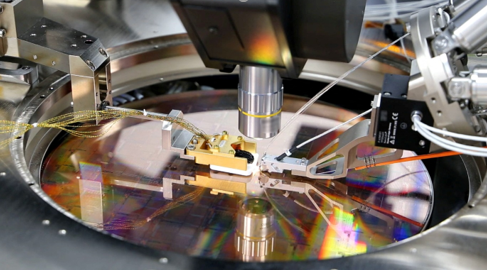
April 26 (Reuters) - Computers using light rather than electric currents for processing, only years ago seen as research projects, are gaining traction, and startups that have solved the engineering challenge of using photons in chips are getting big funding.
In the latest example, Ayar Labs, a startup developing this technology called silicon photonics, said it had raised $130 million from investors, including chip giant Nvidia Corp (NVDA.O).
While the transistor-based silicon chip has increased computing power exponentially over the past decades as transistors have reached the width of several atoms, shrinking them further is challenging. Not only is it hard to make something so minuscule, but as they get smaller, signals can bleed between them.
So, Moore’s law, which said every two years, the density of the transistors on a chip would double and bring down costs, is slowing, pushing the industry to seek new solutions to handle increasingly heavy artificial intelligence computing needs.
According to data firm PitchBook, silicon photonics startups raised over $750 million last year, doubling from 2020. In 2016 that was about $18 million.
“A.I. is growing like crazy and taking over large data center parts,” Ayar Labs CEO Charles Wuischpard told Reuters. “The data movement challenge and energy consumption in that data movement is a big issue.”
The challenge is that many large machine-learning algorithms can use hundreds or thousands of chips for computing. Using current electrical methods, there is a bottleneck in data transmission speed between chips or servers.
Light has been used to transmit data through fiber-optic cables, including undersea cables, for decades, but bringing it to the chip level was challenging as devices used for creating light or controlling it have not been as easy to shrink as transistors.
PitchBook’s senior emerging technology analyst Brendan Burke expects silicon photonics to become standard hardware in data centers by 2025 and estimates the market will reach $3 billion by then, similar to the market size of the A.I. graphic chips market in 2020.
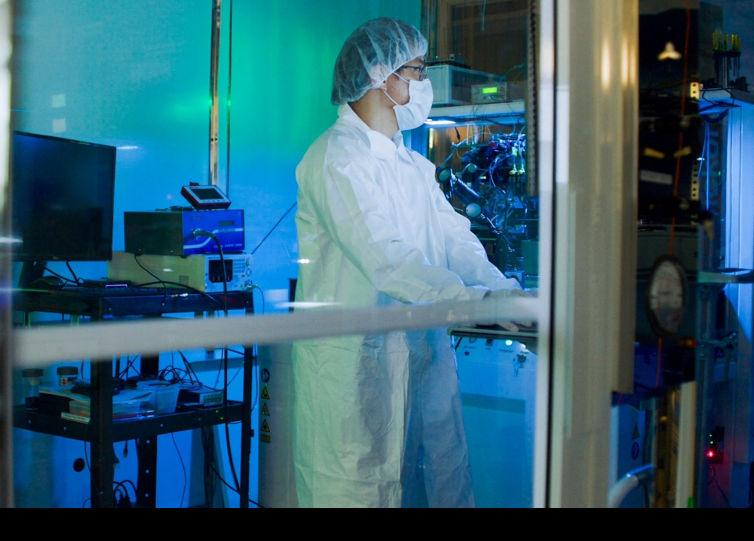
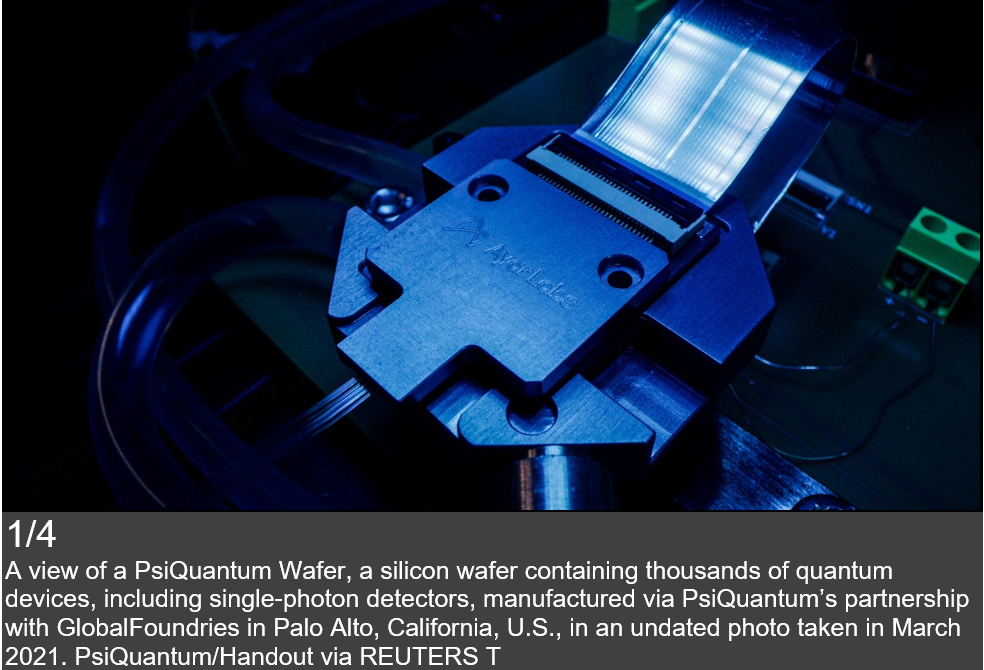
A view of a PsiQuantum Wafer, a silicon wafer containing thousands of quantum devices, including single-photon detectors, manufactured via PsiQuantum’s partnership with GlobalFoundries in Palo Alto, California, U.S., in an undated photo taken in March 2021. PsiQuantum/Handout via REUTERS T
Beyond connecting transistor chips, startups using silicon photonics for building quantum computers, supercomputers, and chips for self-driving vehicles are also raising significant funds.
PsiQuantum has raised about $665 million so far, although the promise of quantum computers changing the world is still years out.
Lightmatter, which builds processors using light to speed up A.I. workloads in the data center, raised $113 million and will release its chips later this year and test with customers soon after.
Luminous computing, a startup building an A.I. supercomputer using silicon photonics backed by Bill Gates, raised $115 million.
It is not just the startups pushing this technology forward. Semiconductor manufacturers are also gearing up to use their silicon chip-making technology for photonics.
GlobalFoundries Head of Computing and Wired Infrastructure Amir Faintuch said collaboration with PsiQuantum, Ayar, and Lightmatter has helped build up a silicon photonics manufacturing platform for others to use. The platform was launched in March.
Peter Barrett, founder of venture capital firm Playground Global, an investor in Ayar Labs and PsiQuantum, believes in the long-term prospects for silicon photonics for speeding up computing but says it is a long road ahead.
“What the Ayar Labs guys do so well ... is they solved the data interconnect problem for traditional high-performance (computing),” he said. “But it’s going to be a while before we have pure digital photonic compute for non-quantum systems.”
To read the complete article, go to: https://www.reuters.com/technology/chip-startups-using-light-instead-wires-gaining-speed-investments-2022-04-26/
In TRIZ, this is a new “S-curve” and evolution in computer chip development. The replacement of transistor-based silicon chips with silicon photonics. The challenge of making silicon chips smaller and smaller has given way to a new technology using light instead of electricity. This evolution of the technology will allow for increased speed and a smaller size of new systems.
- Details
- Category: Inside TRIZ
Scientists developed transparent solar cells that can be used in windows and last for 30 years
Generating electricity outside cities and transporting it into the city comes with much power loss. Ideally, as much of it as possible should be generated locally. Scientists have found a way to alleviate this issue by developing a new type of transparent solar cell that can be used in the windows of buildings and is expected to last for 30 years.

file:///C:/Users/Owner/AppData/Local/Temp/msohtmlclip1/01/clip_image002.jpg" alt="Tall buildings have a lot of solar energy potential with loads of glass surface - Song_about_summer via Shutterstock / HDR tune by Universal-Sci" width="624" height="416" />
Tall buildings have a lot of solar energy potential with loads of glass surface - Song_about_summer via Shutterstock / HDR tune by Universal-Sci
The need for eco-friendly energy production is increasing at a rapid pace. According to research, solar is one of the cheapest methods to generate electricity. A problem with solar power stations is that they take up a lot of space, and while cities generally need the most electricity, they have the least amount of space for power inside cities.
While silicon is still the most efficient material for solar panels, it is not transparent. Researchers at the University of Michigan, North Carolina State University, Tianjin University, and Zhejiang University have looked into organic or carbon-based materials for window-friendly solar panels. They published their work in the science journal: Nature Communications
The main challenge was to keep highly efficient organic light-converting materials from rapidly deteriorating when used. The resilience of these materials is derived from the molecules that move photogenerated electrons to the electrodes. These materials are called "non-fullerene acceptors" to distinguish them from the more sturdy but less efficient "fullerene acceptors" created from nanoscale carbon mesh. Solar cells made with non-fullerene acceptors that incorporate sulfur can reach efficiencies of 18% (an efficiency level that rivals silicon). Still, the problem is that they have a very short lifespan.
Yongxi Li, the first author of the study, explains that non-fullerene acceptors cause very high efficiency but incorporate weak bonds that easily separate under high-energy photons, especially with ultraviolet photons found in sunlight.
After examining the nature of the non-fullerene acceptor deterioration, the researchers discovered that the exposed solar cells only needed reinforcements in a few spots. Firstly, ultraviolet rays would have to be blocked off. To do so, the team added a coating of zinc oxide, a popular sunscreen component on the side of the glass that faces the sun.
A thinner zinc oxide layer next to the light-absorbing area improves the conduct of solar-generated electrons to the electrode. Sadly, this also tears down the fragile light absorber. The researchers added a layer of a carbon-based material called IC-SAM as a buffer to solve this issue.
On top of that, the electrode that draws positively charged "holes" into the circuit (essentially spaces abandoned by electrons) can react with the light absorber. So to protect that flank, the team added another buffer layer in the form of a fullerene shaped like a soccer ball. (A fullerene is an allotrope of carbon whose molecule consists of carbon atoms joined by single and double bonds to form a closed mesh, with fused rings of five to seven atoms.)
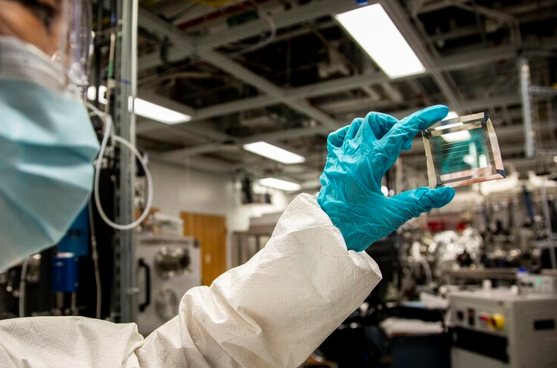
file:///C:/Users/Owner/AppData/Local/Temp/msohtmlclip1/01/clip_image004.jpg" alt="One of the researchers holding a solar cell module with 40% transparency, based on the new design with an estimated life expectancy of 30 years - (Image Credit: Robert Coelius, University of Michigan Engineering)" width="566" height="377" />
The researchers then put their new reinforcements to the test under various intensities of simulated sunshine, ranging from 1 sun to 27 suns, and temperatures as high as 65 degrees celsius. They projected that the solar cells would still be functioning at 80% efficiency after 30 years based on how performance declined under these conditions.
One of the researchers holding a solar cell module with 40% transparency, based on the new design with an estimated life expectancy of 30 years - (Image Credit: Robert Coelius, University of Michigan Engineering)
After examining the nature of the non-fullerene acceptor deterioration, the researchers discovered that the exposed solar cells only needed reinforcements in a few spots. Firstly, ultraviolet rays would have to be blocked off. To do so, the team added a coating of zinc oxide, a popular sunscreen component on the side of the glass that faces the sun.
A thinner zinc oxide layer next to the light-absorbing area improves the conduct of solar-generated electrons to the electrode. Sadly, this also tears down the fragile light absorber. The researchers added a layer of a carbon-based material called IC-SAM as a buffer to solve this issue.
On top of that, the electrode that draws positively charged "holes" into the circuit (essentially spaces abandoned by electrons) can react with the light absorber. So to protect that flank, the team added another buffer layer in the form of a fullerene shaped like a soccer ball. (A fullerene is an allotrope of carbon whose molecule consists of carbon atoms joined by single and double bonds to form a closed mesh, with fused rings of five to seven atoms.)
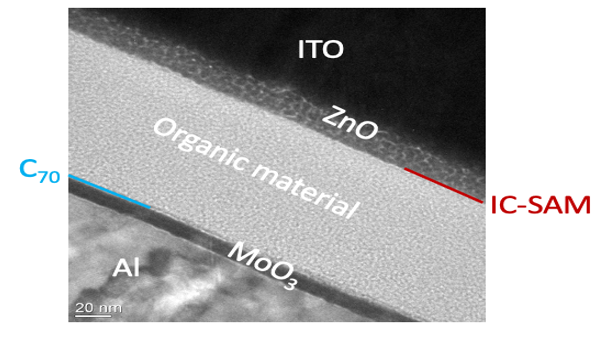
file:///C:/Users/Owner/AppData/Local/Temp/msohtmlclip1/01/clip_image006.png" alt="An extreme close-up of a cross-sectional slice of an OPV with the added layers of material (IC-SAM and C70) between the organic material and the external buffers. After the material was subjected to high-intensity light to replicate an estimated age of 30 years. It reveals an intact organic active region with no breakdown at the edges. (Image Credit: Kan Ding, University of Michigan)" width="604" height="328" />
The slide shows an extreme close-up of a cross-sectional slice of an OPV with the added layers of material (IC-SAM and C70) between the organic material and the external buffers. After the material was subjected to high-intensity light to replicate an estimated age of 30 years, it revealed an entire organic active region with no breakdown at the edges. (Image Credit: Kan Ding, University of Michigan)
Because the materials can be prepared as liquids, the manufacturing costs are expected to be relatively low, increasing the feasibility for wide-scale use. All in all, we are yet another step closer to actual solar power-generating windows with these findings.
- Details
- Category: Inside TRIZ
Idealized Supply Chain Design: Towards Ideality
- Published on October 15, 2021
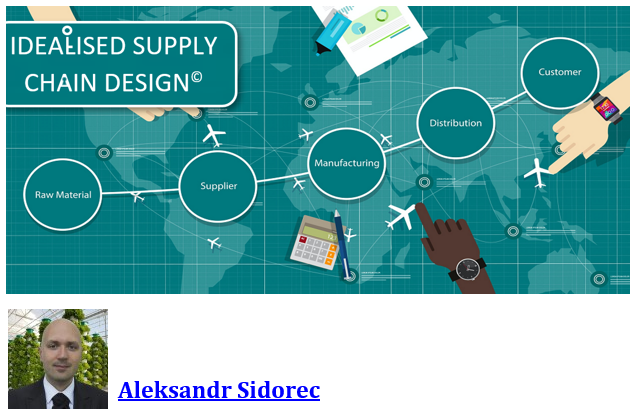
Igniting Food Systems Revolution | Industry 4.0 Partner @ Cognizant
Five years ago, I came across an OODA loop model (observe-orient-decide-act) developed in the 1960ies by military strategist Air Force Colonel John Boyd to support fighter pilots and their decision-making tasks on the battlefield. Indeed, you might draw parallels with some modern frameworks, but this is not an objective here. What impressed me is his serious approach to assessing implications triggered by the second law of thermodynamics and its further impact on military strategy.
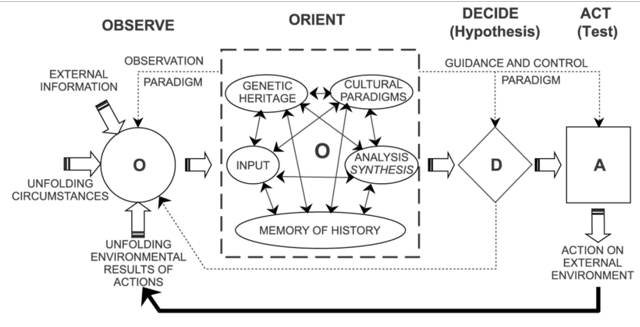
Boyd’s definition of the law was much more “user friendly” than the versions we usually find in the works of Kelvin, Plank, and others. He stated that:
“… entropy of any closed system always tends to increase and thus the nature of any given system continuously changes even as efforts are directed toward maintaining it in its original form.”
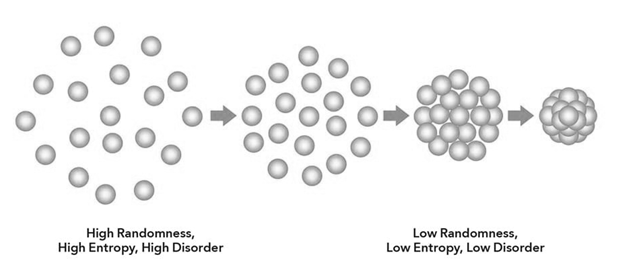
That was an exciting insight that stimulated my further thinking in the supply chain domain. Despite all efforts that we put in to control the flows, the environment continuously brings us even more challenging conditions. We try to impose even more control and organization over it. But how successfully?
I have not continued massaging this mental model too long, as my attention slipped to another point that this law highlights. Any organized system will continuously tend towards the increasing levels of entropy, at the same time, it always aims at minimizing its energy state. Well, the more we want to organize and control the system, the more energy we will spend on it, yes?
While incubating those cosmic thoughts, I felt like Don Quixote fighting with windmills in real life. The nature of supply chain challenges I had to orchestrate with my global team felt like solving fundamental contradictions rather than trade-offs that we historically managed across many industries. I had to build operating models that were both agile and lean, deliver superior service to the markets while meeting aggressive cost-cutting goals, activating efficiencies, and increasing the level of customized solutions. Contradictions.

How can we orchestrate supply chain contradictions? During my next jump into a mental rabbit hole, this is the question I was researching. One online statement captured my attention: “…every technical system aims to reach its maximum state of ideality — function is performed (or need is fulfilled), but there is no system”.
That made sense considering conclusions from the second law of thermodynamics and minimization of energy consumption made me pause. From that moment, my introduction with Genrich Altshuller started (founder of TRIZ) that later led to the definition of Idealized Supply Chain Design principles inspired by pieces of training and work of TRIZ Master Valery Souchkov.
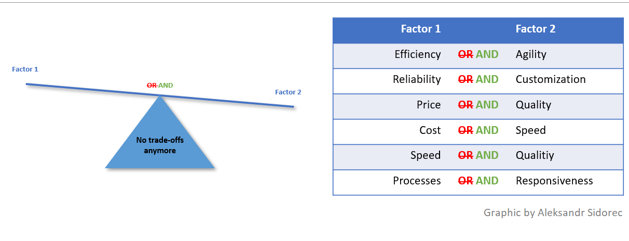
Let me first give you an initial overview of TRIZ itself.
TRIZ (translates from Russian as Theory of Inventive Problem Solving) had its starting point back in 1946 when Soviet inventor Genrich Altshuller and his colleagues ran research with thousands of patents. They discovered and coded specific patterns of technical systems’ evolution.
The main message is that evolution of a technical system is not a random process but is driven by specific regularities and has consistent patterns. These patterns can be used to consciously develop a system along its path of technical evolution and get to the breakthrough innovation by solving very complex problems in engineering. By that time, Altshuller and his students came with a definition of “contradictions” and developed frameworks that are helping to solve issues on the lowest levels of any technical system. Today technical TRIZ is actively applied in such companies as Samsung, Philips, LG Electronics, and many other names from the Fortune 500 list.
Since the 2000s, TRIZ had another evolutionary boost by actively expanding its application in other non-technical domains thanks to the passion and the drive of a tiny and dedicated group of professionals: in education, business, and software engineering. My kids are an excellent example as they participate in several training platforms that utilize TRIZ educational methods to bolster children’s creativity and systematic problem solving.
Let’s get to the basics now…
One of the core principles we will work with is the system’s ideality. As supply chains are engineered systems, those are architected to perform several functions. Based on the principle of ideality:
a perfect supply chain performs all the functions it was designed for without using any resources or creating any harm to itself, people, its product, the environment, or society.
In other terms: the consumer receives the product, but there is no supply chain behind it.
Any change in the supply chain that improves the performance of its designed functions or reduces the number of resources or the degree of harmful effects and waste will advance it towards ideality. Such a mental model is critical when we zoom out to the level of strategic planning and business / operating model architecture.
It is essential to note the focus is on the function and not the supply chain itself.
The operating model of the supply chain can be changed from the ground up as long as the new model meets its intended goals.
For instance, if we want to deliver a specific product to a consumer, we have several models at our disposal, each of which applies different operating principles:
‣ Product is packed and delivered by the courier to the consumer’s door
‣ Pack is picked by an autonomous vehicle and delivered to the destination
‣ Consumer downloads CAD technical drawing and prints the product at home
The delivery of the goods will be considered ideal when: the product appears in the right place, at the right time, and in the correct quantity without requiring any logistical system to get it to the consumer. Science Fiction? Not necessarily.
The objective of such a model is not to create a Space conquest strategy for the Supply Chain Management domain (although you might certainly discuss this idea with Elon Musk as he will need Space Logistics experts soon). Rather than move us outside of psychological inertia when we are trying to solve problems across the value chain in the same way others do. This barrier to innovation becomes even more critical when we intend to redesign the whole operating model of the enterprise to activate new levels of competitive advantage.
What often happens? We have a hammer, and we see the nails everywhere. As a result, we tend to solve problems or implement solutions based on predefined templates of models and behaviors instead of creating tailored and unique system structures relevant only to you, your company, and the particular context of the business.
Why is this important within the strategic layer of the supply chain model? Because technology becomes quickly obsolete and is becoming quickly commoditized, causing the problem that it is hard to build a competitive strategy just on this. Exciting potential lies in an intelligent blending of different elements to activate new capabilities and functions.
The best way to represent such a level of ideality through the simple formula that I have adopted from the works of Valery Souchkov:
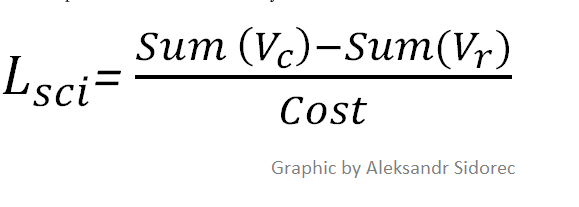
Li = Level of Supply Chain ideality
Vc = Value-creating factors (e.g., speed, flexibility, consumer satisfaction, etc.)
Vd = Value reducing factors (e.g., waste, environmental impact, long lead times, etc.)
Cost = all the costs associated with running and executing such a supply chain
The formula clearly states where our focus should be.
When discussing the topic of ideality, it is worth considering some of the trends related to the evolution of the technical system.
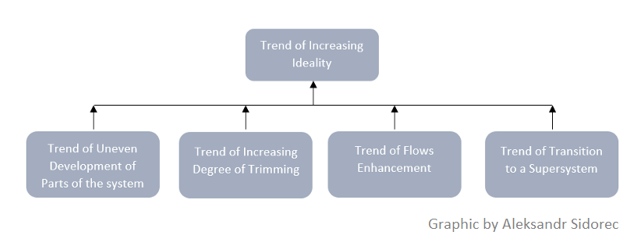
I have listed just a few examples that boost the state of the supply chain’s ideality. Still, we will have a deeper look into that in later publications considering that this forms an essential foundation when an organization sets an ambition to make a quantum leap in its business performance.
Before we deep dive into the some of those trends in the context of our daily operational realities, I should clarify some relevant definitions related to:
‣ Trimming
‣ Supersystem
Trimming in the supply chain. When applying the trimming process, we look for ways to reduce (to trim) some of the components involved in a specific supply chain activity. Their functions are redistributed amongst other (existing or improved) components. This process might lead to better operational costs, safety, and processing speed.
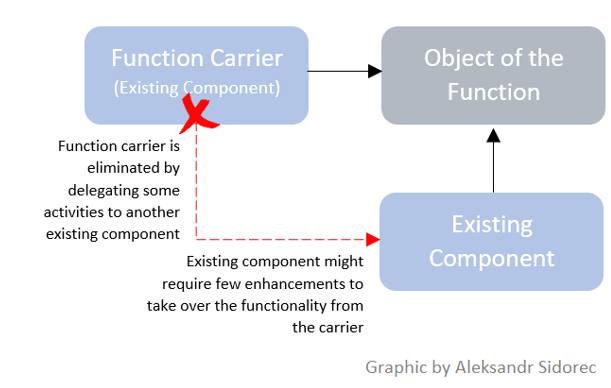
Let’s assume that based on functional analysis (analogue of process analysis/value stream mapping), we have identified a set of activities that are performed within a specific part of the supply chain. For example, and to provoke some out-of-box thinking, let’s look at the case of international container shipments causing many challenges today due to global imbalance on the freight markets.
The Core Elements of the ocean freight flow are the following:
Vessel — Container — Product
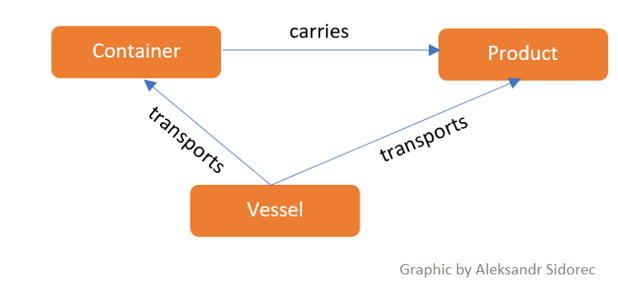
We know that a vessel’s availability is one of the factors currently causing adverse effects within our supply chain system. So, let’s take it out of the equation and delegate the transportation function to the container. So, the new system would be something like this:

Imagine the ocean full of self-sailing and navigating containers using electro-drive powered by solar energy.
Trimming is a powerful standalone tool that can help reduce costs across the value chain and should be used as collaborative work between procurement and technical functions. I will publish different material on this subject.
Supersystem of the supply chain. The supersystem is one of the core elements of the Idealised Supply Chain Design framework. The main point here is that the supply chain is not an isolated activity but a part of the specific supersystem that the company operates in.
Here I am going to extend the work of Valery Souchkov. He made a deep analysis of the supersystem within TRIZ by defining the key elements of the supersystem’s completeness:
‣ Supersystem as a source of resources for a supply chain system
‣ Supersystem as a driver of lifecycle within a supply chain system
‣ Supersystem as a means of control within a supply chain system
‣ Supersystem as a source of a target for a supply chain systems existence
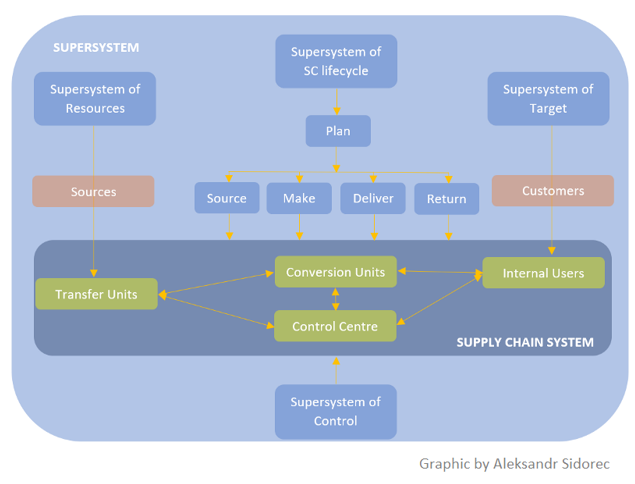
We can certainly draw a parallel between the supersystem and business ecosystem, which would be correct to a certain extent, considering there are elements mutually shared between both structures. In this context, a more correct view would be that the business ecosystem represents a sum of several supersystems that share common targets and objectives.
Now, here are some key elements related to our Supersystem:
🅐 Supersystem provides Resources necessary for Supply Chain System to execute its function and target. For example, it is possible to execute its function thanks to accessing the Sources = Vendors who are forming a critical part of the supersystem
🅑 Supersystem provides the Lifecycle of Supply Chain System, meaning that it provides everything necessary to ensure that various execution stages can be performed within the system. A minimum number of subsystems are available within a Supersystem to ensure that planning, sourcing, production, delivery, and returns can be executed. For example, in the case of Deliver stage, Supersystem provides an infrastructure (e.g., roads) that enables the execution of logistical function within the supply chain
🅒 Supersystem provides Control over the Supply Chain System that is activated thanks to the minimal number of subsystems within the Supersystem itself. For example, the driver operates the forklift in the warehouse, but the Warehouse Management System is used to guide the picking locations
🅓 Supersystem as a source of Supply Chain Systems Target provides a minimal number of subsystems necessary to ensure that the system effectively executes its primary purpose and function. For example, Supersystem provides the customers or consumers who have specific expectations related to the final product of such a system. Otherwise, the system would be supplying the goods to the markets that do not exist (previously I would joke regarding the supply of refrigerators to the North Pole, but with all the environmental challenges and temperature changes past 5 years, this might become a new reality)
Now we come to the Supply Chain System itself. It has a minimal viable structure (MVS) that usually includes Transfer Units, Conversion Units, Control Centre, and Internal Users. But in order not to overload this publication, I will skip details at this stage.
Let’s return to our conversation about the technical systems trends and their applicability within the supply chain domain.
Most interesting is that by combining the knowledge about such trends with S-curve analysis, we are well-positioned to forecast several scenarios about supply chain systems’ further development in the context of specific business activity. This knowledge gives us the means to design a long-term transformation roadmap for a specific operating model and its subsystems. But this should be performed in combination with trends of consumer behaviors evolution that we will analyze in another upcoming publication.
Why is this important? Idealized Supply Chain Design operates across several layers, each with its own set of tools and toolkits that could be applied to solve strategic, resource-based, and operational challenges within the supply chain.
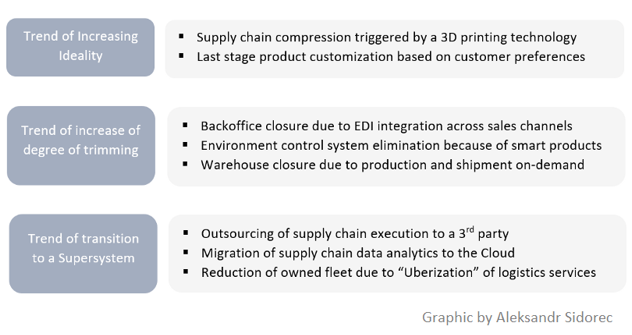
This information means that we will need to work from a strategic level. We are having a systematic look at the supply chain as a whole, including analyzing its subsystems and the current state of the supersystem. We do not want supply chain engineers and architects to implement the changes across the business value chain so that no supersystem can support this.
We do not need to go far away, for examples. We already have hydrogen-powered engines and cars available, but there is a lack of access to the fuel itself. Another example is when you develop automated warehouses for inbound cargo handling. Still, your supply base is not ready to adopt because of new palletization requirements so that you can have smooth warehousing operations and a low level of exceptions handling.
We move into resource management from the strategic level blended with processes and flows. Those are the layers where we usually start facing first contradictions that will not accept simple trade-offs but require a disciplined and structured work of resolving them. And that is where the miracle of idealized supply chain design begins.
This publication contains an introductory overview to give the reader a high-level understanding of some essential principles related to the Idealised Supply Chain Design. The following article will provide insights about the “soft” elements of the discipline — psychological inertia and role of abstractions, why those are important and relevant for supply chain practitioners.
Stay tuned. More to be published on the topic…
About the Author: Aleksandr is Advisory Partner Industry 4.0 @ Cognizant. He is on a mission of supporting clients across AgriFood, FMCG, and Retail sectors to accelerate value chain transformation boosted by the Internet of Things (IoT) and intelligent data leverage. Previously he spent 18 years shaping operational capabilities for the Fortune 500 companies: Olam International, Holcim, Johnson & Johnson, Caterpillar / Zeppelin, and Procter & Gamble.
He blends his professional activity with a personal exploration of startup ecosystems combined with research related to Lean Six Sigma, Inventive Problem Solving (TRIZ), and Systems Engineering to activate solutions for the most challenging issues across the supply chain domain.
More information: www.sidorec.com
Idealized Supply Chain Design (ISCD) by Aleksandr Sidorec is licensed under a Creative Commons Attribution-NonCommercial-NoDerivatives 4.0 International License
- Details
- Category: Inside TRIZ

